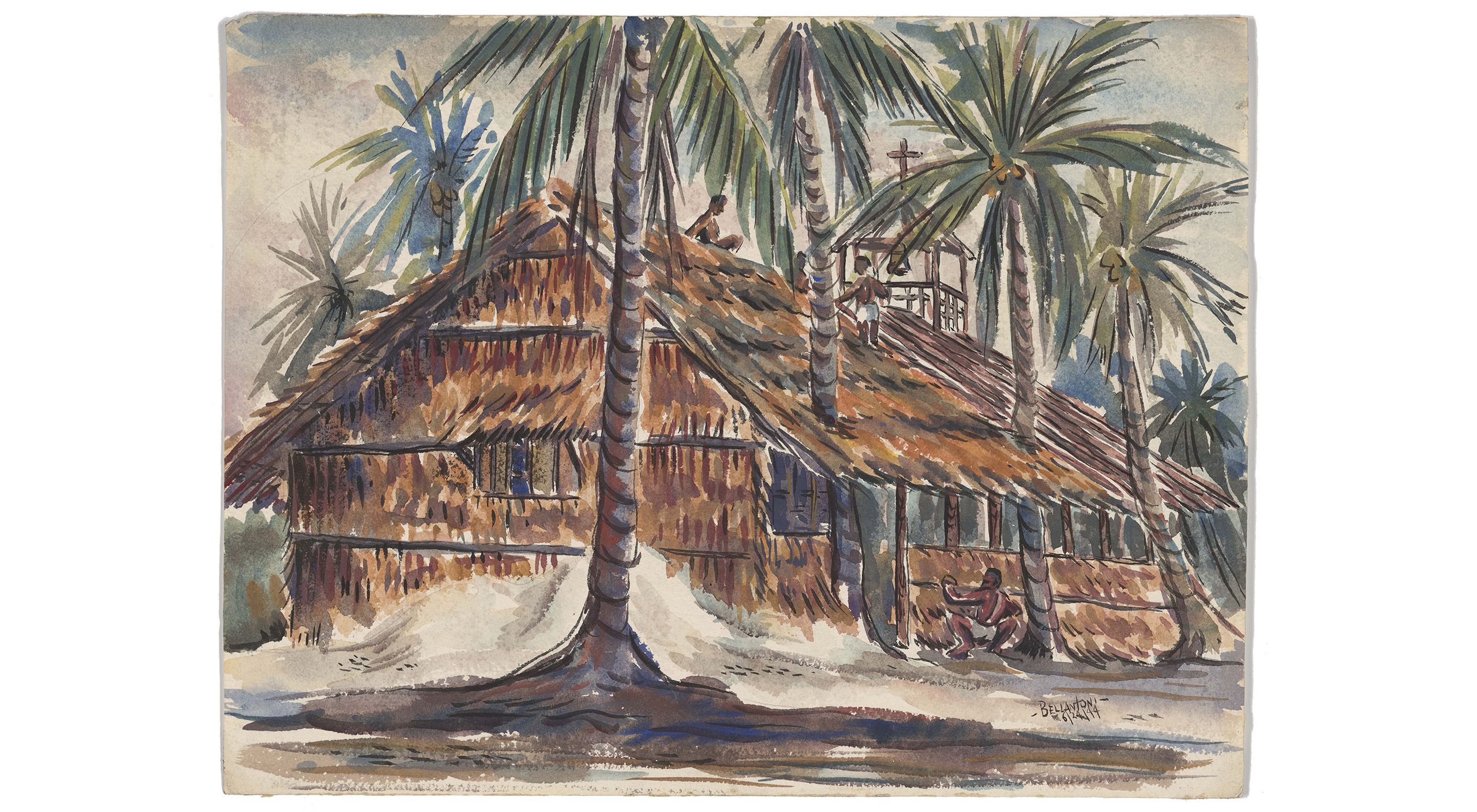Can Do Attitude
Seabees at Work
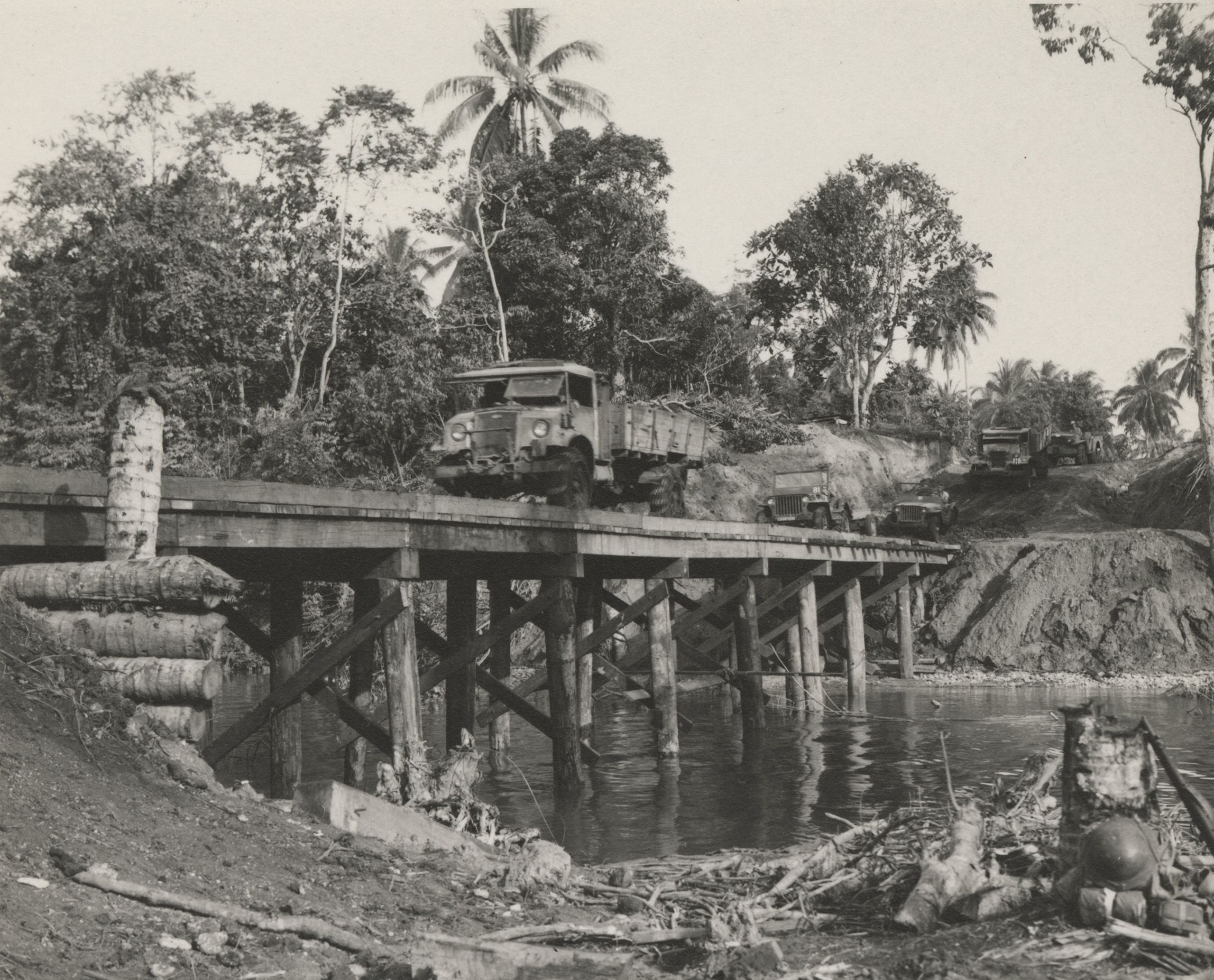
In the wake of the attack on Pearl Harbor, the Allied forces quickly understood they could not win the war against Japan without creating bases for operations throughout the Pacific theater. The push toward Tokyo would require hopscotching from island to island and could only be accomplished by building airfields, docks, barracks, machine shops, and hospitals. On December 28, 1941, the United States Navy formed its first construction battalion to accomplish the engineering feat of building more than 400 bases needed by American fighting forces. By the end of World War II, the US Navy “Seabees"—a nickname derived phonetically from the “C” and “B” of “construction battalion”—had built 111 airstrips, 441 piers, more than 2,500 ammunition magazines, hospital capacity for 70,000 patients, 700 square blocks of warehouses, housing for 1.5 million troops, and storage tanks holding 100 million gallons of gasoline.
Build for Your Navy, by R. Muchley, issued by the United States Navy Recruiting Command, circa 1942. Poster Collection, US 2597, Hoover Institution Archives
Build for Your Navy, by R. Muchley, issued by the United States Navy Recruiting Command, circa 1942. Poster Collection, US 2597, Hoover Institution Archives
Build and Fight for Victory, by John Falter, issued by United States Navy Recruiting Command, May 12, 1943. Poster Collection, US 2564, Hoover Institution Archives
Build and Fight for Victory, by John Falter, issued by United States Navy Recruiting Command, May 12, 1943. Poster Collection, US 2564, Hoover Institution Archives
Enlist Now, issued by United States Navy Recruiting Command, circa 1942. Poster Collection, US 2619R, Hoover Institution Archives
Enlist Now, issued by United States Navy Recruiting Command, circa 1942. Poster Collection, US 2619R, Hoover Institution Archives
Construction Workers Build for Victory, issued by United States Navy Recruiting Command, circa 1942. Poster Collection, US 2562, Hoover Institution Archives
Construction Workers Build for Victory, issued by United States Navy Recruiting Command, circa 1942. Poster Collection, US 2562, Hoover Institution Archives
The US Navy specifically recruited engineers, welders, stevedores, machinists, mechanics, riveters, and architects to join the naval construction battalions. Many of the skilled workers who volunteered would otherwise have received draft deferments and inflated wages to work in stateside factories and shipyards. The volunteers’ choices to give up safe domestic working conditions for the danger of combat and disease abroad quickly gave the Seabees a reputation as one of the most patriotic fighting units in the Pacific theater.
Fighting Bee Seabee Insignia, by Frank Iafrate, circa 1942. Digital Record
Fighting Bee Seabee Insignia, by Frank Iafrate, circa 1942. Digital Record
Carpenter’s First Mate First Class Frank Iafrate designed the official Seabee insignia in 1942, featuring a fighting bee wearing a sailor’s hat and bearing a wrench and hammer to indicate industry and mechanical knowhow, while his submachine gun symbolizes his readiness for battle. The rendering pays tribute to the Seabees’ ingenuity, dedication to hard work, and humor and is still used today. Additionally, during the war, artists at Walt Disney Studios designed more than 1,200 military insignias for the various branches of the US military, including the 78th Seabees insignia.
Illustration of the 78th Seabee Insignia (based on the Disney design), by Natale Bellantoni, n.d. Digital Record
Illustration of the 78th Seabee Insignia (based on the Disney design), by Natale Bellantoni, n.d. Digital Record
Natale Bellantoni
The Battalion Artist
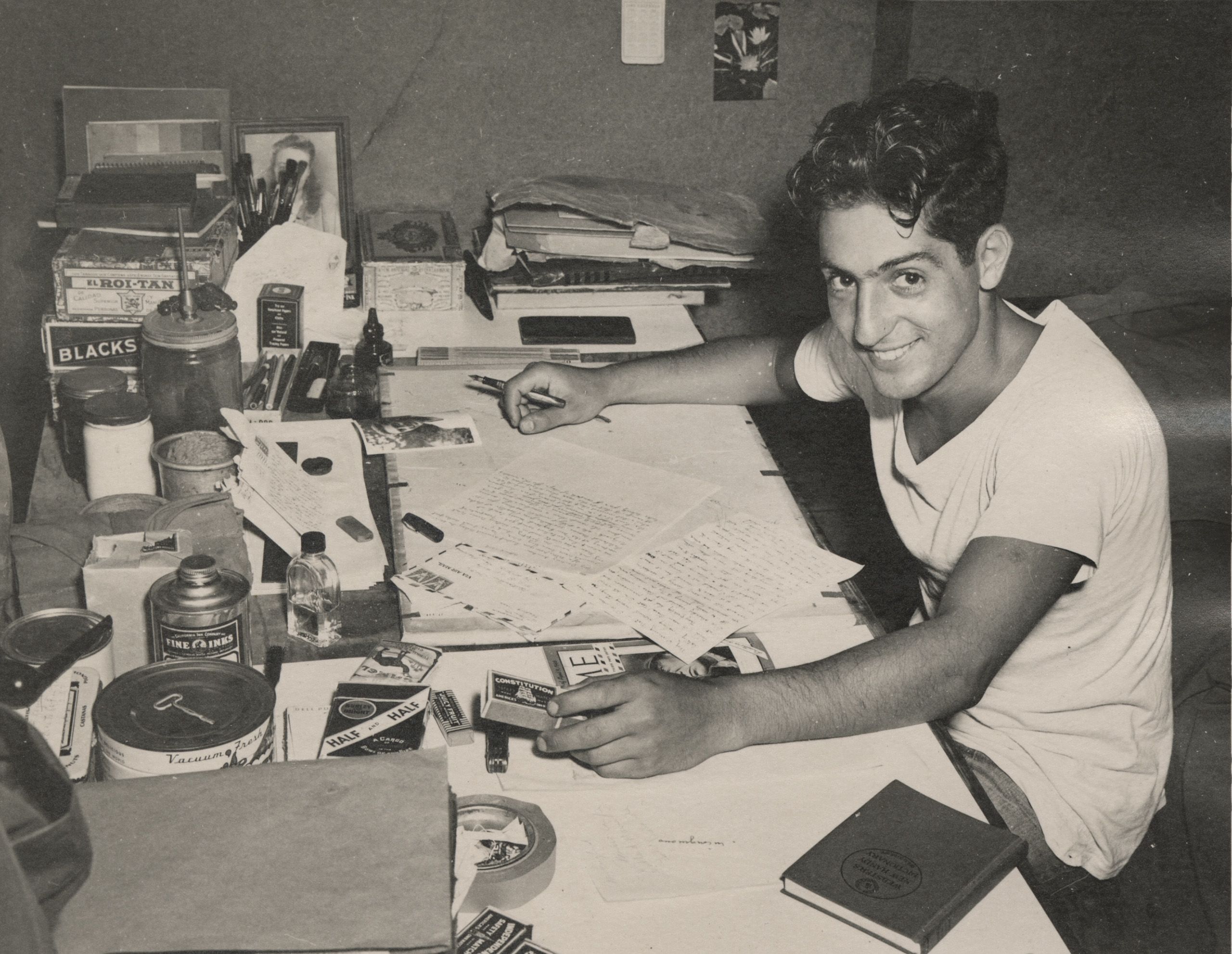
In 1941, when Pearl Harbor was attacked by Japanese forces, Natale Bellantoni was an art student in Boston. Faced with the options of enlisting or being drafted, young Nat decided to use his skills in drafting, sketching, architecture, and photography in service to the newly formed naval construction battalions that would build the bases needed to reach and defeat Japan.
With Nat’s unconventional skills, his assignments were more varied than most. He worked as a draftsman, painted building signage and aircraft nose art, and was a staff member of the daily battalion newspaper.
One of Nat’s tasks was helping to create a Battalion Log for both the 78th and 71st Construction Battalions. These logs were styled after college yearbooks and documented the lives and accomplishments of each construction battalion’s servicemen over the course of the war in photographs, drawings, maps, and articles. Today, the logs serve as vital records of the history of the war and the individuals involved in building the bases, air strips, and docks that were crucial to Allied victory against Japan.
Battalion Log, circa 1945. Digital Record
Battalion Log, circa 1945. Digital Record
Greater Boston Seabees, n.d.
Greater Boston Seabees, n.d.
78th Construction Battalion newspaper staff, from the Battalion Log, n.d.
78th Construction Battalion newspaper staff, from the Battalion Log, n.d.
Edwin Keegan, Natale Bellantoni, and others working on the Battalion Log, n.d.
Edwin Keegan, Natale Bellantoni, and others working on the Battalion Log, n.d.
Seabees at Work
Building Towards Victory
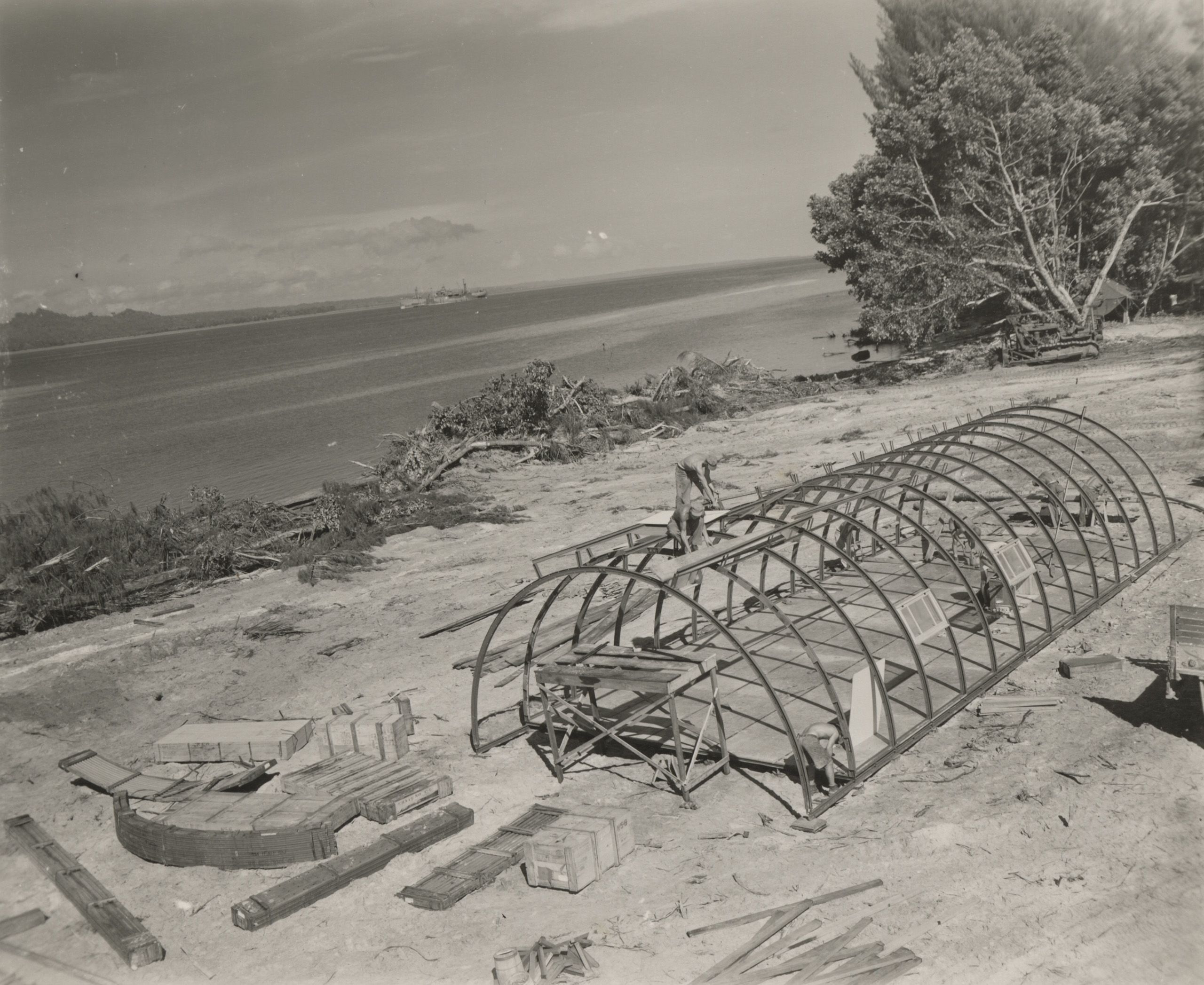
At the beginning of the war, the United States Marines playfully teased the Seabees, the youngest addition to American fighting forces. After Seabee forces built Henderson Airfield on Guadalcanal under heavy fire, however, the Marines changed their attitude to one of respect. As this photograph shows, Marines came to learn that their success on land, at sea, or in air could not be attained without the bold construction feats of the new Seabee battalions.
Chief Edward Olim, from the U.S. Navy 71st Construction Battalion Log, circa 1945.
Chief Edward Olim, from the U.S. Navy 71st Construction Battalion Log, circa 1945.
Construction battalions would arrive at an “Island X”—the location unknown to the Seabees until they arrived, for security reasons—and would be assigned tasks to increase military infrastructure. Building projects completed by the Seabees included landing strips, warehouses, administration buildings, hospitals, storage tanks and plants for filling fuel drums, pipelines, docks, roads, chapels, recreation areas, and camps for soldiers.
The Water Department in Finshafen, New Guinea, 1944.
The Water Department in Finshafen, New Guinea, 1944.
Bakers in New Guinea, 1944.
Bakers in New Guinea, 1944.
Doctors in Finshafen, New Guinea, 1944.
Doctors in Finshafen, New Guinea, 1944.
Tent city in Lorengau, New Guinea, n.d.
This tent city in Lorengau was where the 78th Construction Battalion lived while they built the Naval Air Base Receiving Station on Manus Island.
Tent city in Lorengau, New Guinea, n.d.
This tent city in Lorengau was where the 78th Construction Battalion lived while they built the Naval Air Base Receiving Station on Manus Island.
Mill crew in Manus, 1944.
Many of the projects completed by the 78th Construction Battalion, from the building of docks to the construction of buildings, relied on the lumber procured by the mill crew.
Mill crew in Manus, 1944.
Many of the projects completed by the 78th Construction Battalion, from the building of docks to the construction of buildings, relied on the lumber procured by the mill crew.
Australian trucks moving up to the front line over a bridge built by 78th Construction Battalion on the Bumi River, New Guinea, 1944.
Australian trucks moving up to the front line over a bridge built by 78th Construction Battalion on the Bumi River, New Guinea, 1944.
Survey party unloading their gear before starting preliminary surveys on Manus lsle, Barber and Brooks in foreground, by William. S. Snell, 1944.
Survey party unloading their gear before starting preliminary surveys on Manus lsle, Barber and Brooks in foreground, by William. S. Snell, 1944.
Naval Air Base Receiving Station on Manus Island, 1944.
The 78th Construction Battalion built a Naval Air Base Receiving Station consisted of a mess hall and galley that could serve 10,000 men, a chapel, a theater, a library, showers and latrines, gasoline and water storage tanks, roads and docks, and 300 Quonset huts that could house 20 men each.
Naval Air Base Receiving Station on Manus Island, 1944.
The 78th Construction Battalion built a Naval Air Base Receiving Station consisted of a mess hall and galley that could serve 10,000 men, a chapel, a theater, a library, showers and latrines, gasoline and water storage tanks, roads and docks, and 300 Quonset huts that could house 20 men each.
Chapel in New Caledonia, 1944.
The 78th Construction Battalion built several chapels during their time in the Pacific, including this one in New Caledonia.
Chapel in New Caledonia, 1944.
The 78th Construction Battalion built several chapels during their time in the Pacific, including this one in New Caledonia.
Victory garden in back of chapel in New Caledonia, 1944.
The 78th Construction Battalion built this chapel and devised a system of wooden troughs for irrigating a victory garden.
Victory garden in back of chapel in New Caledonia, 1944.
The 78th Construction Battalion built this chapel and devised a system of wooden troughs for irrigating a victory garden.
Shoe shop in New Caledonia, 1944.
Shoe shop in New Caledonia, 1944.
Ponam Airstrip
Strategic Construction
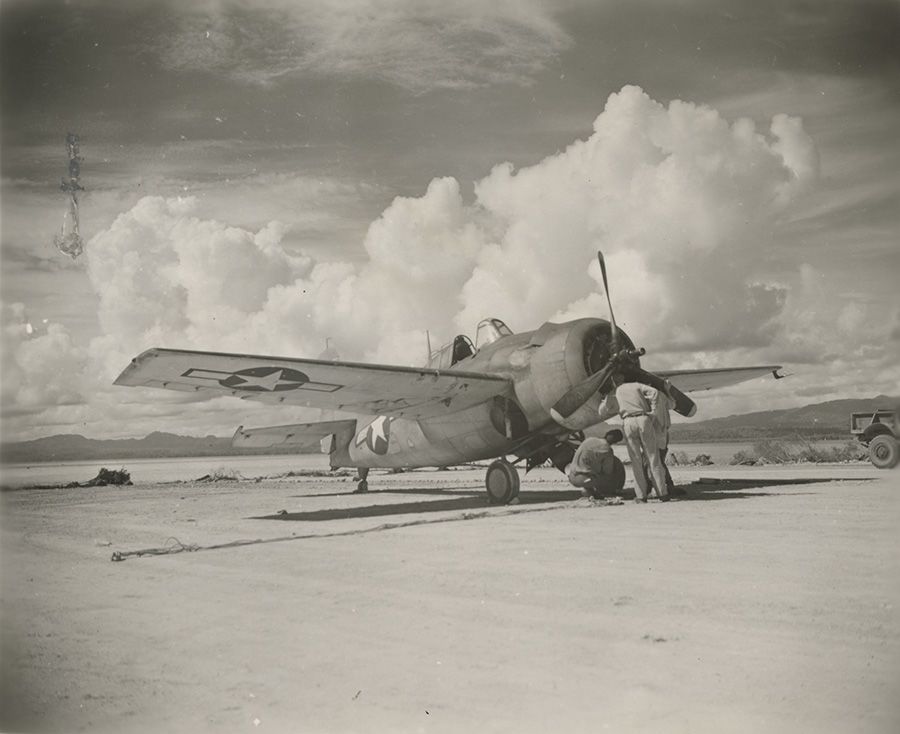
Dynamite conveyed by dory for blasting solid rock coral, 1944.
Dynamite conveyed by dory for blasting solid rock coral, 1944.
Dynamite conveyed by dory for blasting solid rock coral, 1944.
Dynamite conveyed by dory for blasting solid rock coral, 1944.
Dynamite conveyed by dory for blasting solid rock coral, 1944.
Dynamite conveyed by dory for blasting solid rock coral, 1944.
Coral blasting, 1944.
Coral blasting, 1944.
Coral blasting, 1944.
Coral blasting, 1944.
Coral digging, 1944.
Coral digging, 1944.
Coral digging, 1944.
Coral digging, 1944.
Four Rollers - Ponam Airstrip, Ginsberg, "Horse" Hulett, Cassale [Note on back], by William S. Snell, 1944.
Four Rollers - Ponam Airstrip, Ginsberg, "Horse" Hulett, Cassale [Note on back], by William S. Snell, 1944.
Four Rollers - Ponam Airstrip, Ginsberg, "Horse" Hulett, Cassale [Note on back], by William S. Snell, 1944.
Four Rollers - Ponam Airstrip, Ginsberg, "Horse" Hulett, Cassale [Note on back], by William S. Snell, 1944.
Ponam, 1944.
Ponam, 1944.
Ponam is a small island, just one-and-a-half miles long and a quarter-mile wide, north of Manus Island in the Admiralty group of islands. In 1944, the 78th Construction Battalion began building an airstrip on Ponam after it was established as a critical tactical location for the Allied forces. The 78th spent nearly 10 weeks on Ponam and during this time their construction activities reached a new high of efficiency and production.They dredged swamps and used coral rock from the ocean surrounding the island as landfill to make an airstrip and repair facility for carrier aircraft.
First, Seabees loaded dynamite onto small boats to move the explosives by hand off the coast.
Next, the dynamite was used to break up the solid coral rock.
Seabees used construction equipment to dig the broken coral and haul it to the appropriate location.
These rollers were then used to create a smooth airstrip.
The final project included a 5,000-by-150-foot coral-surface runway with parking areas, shop facilities, storage warehouses, storage tank farms, roads, docks, and more than one hundred Quonset huts.
Cathedral Square
Working with the Community in Ponam
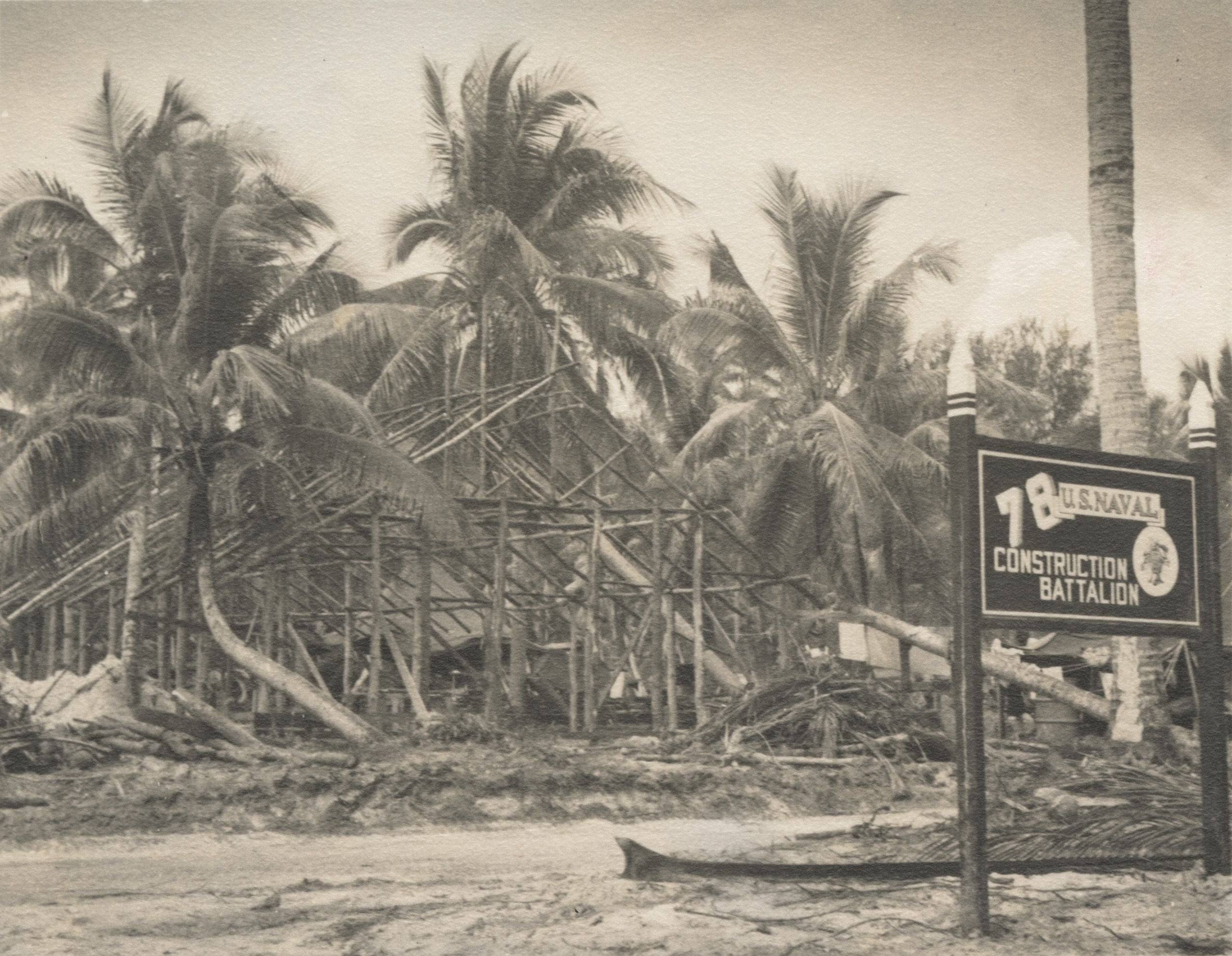
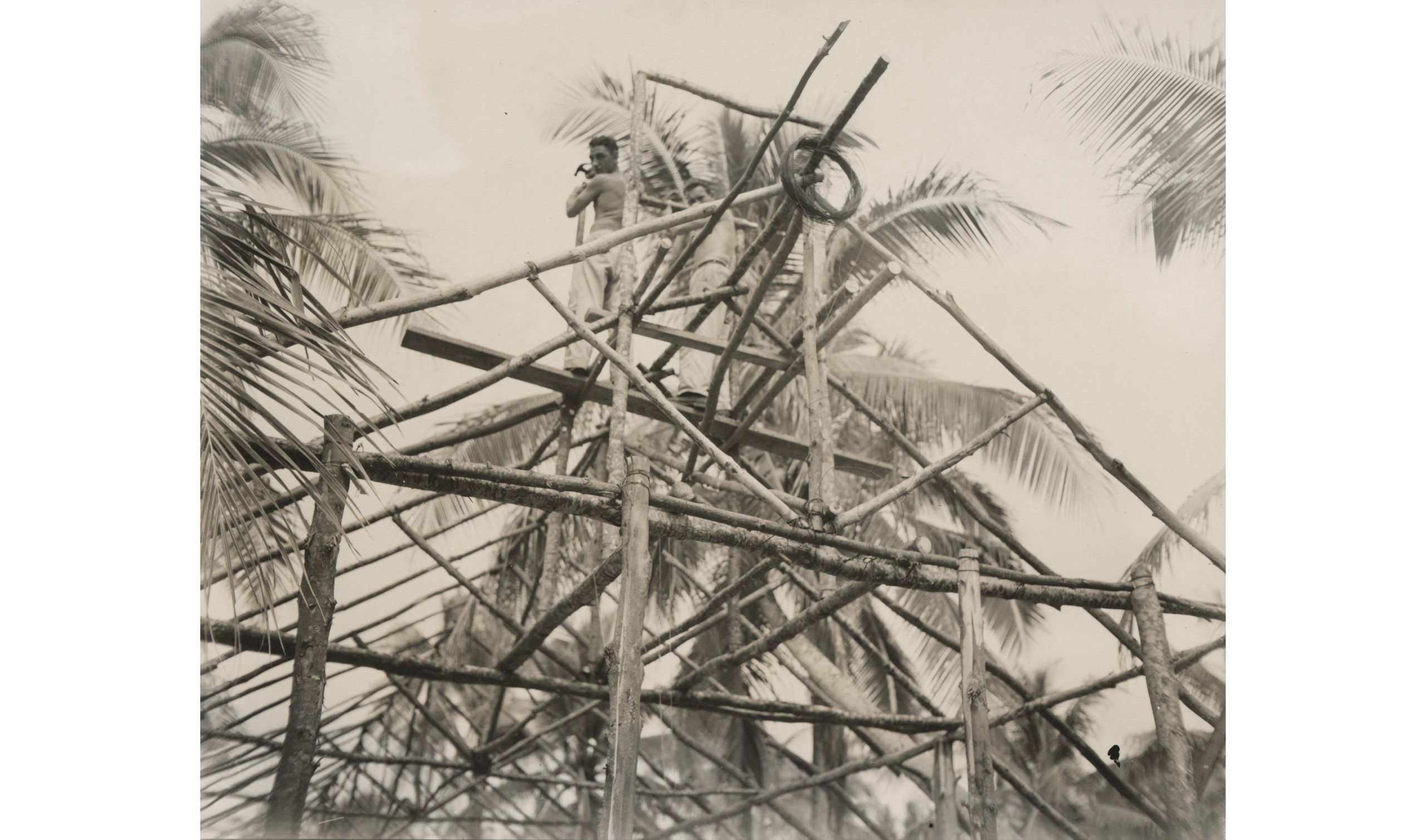
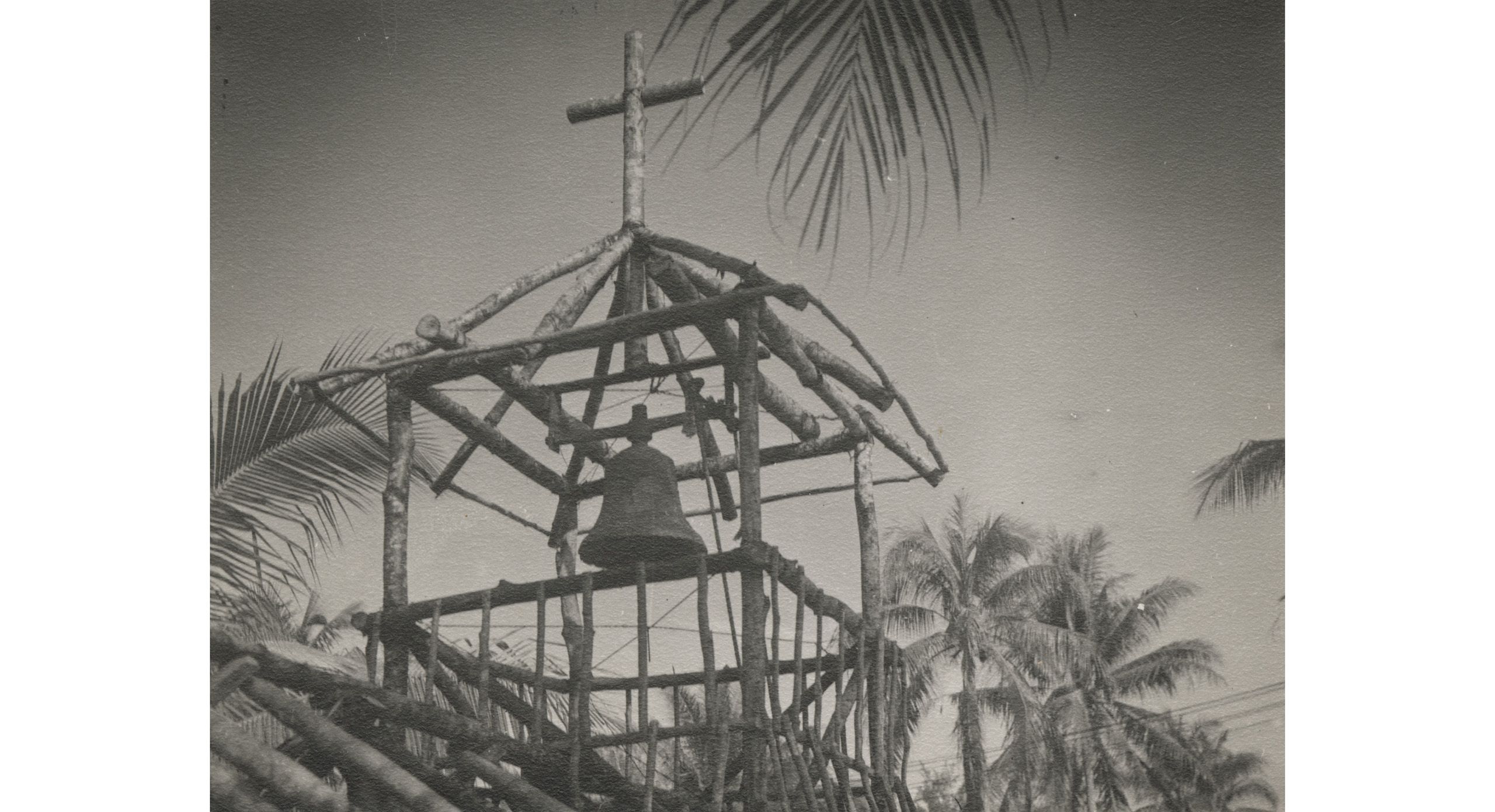
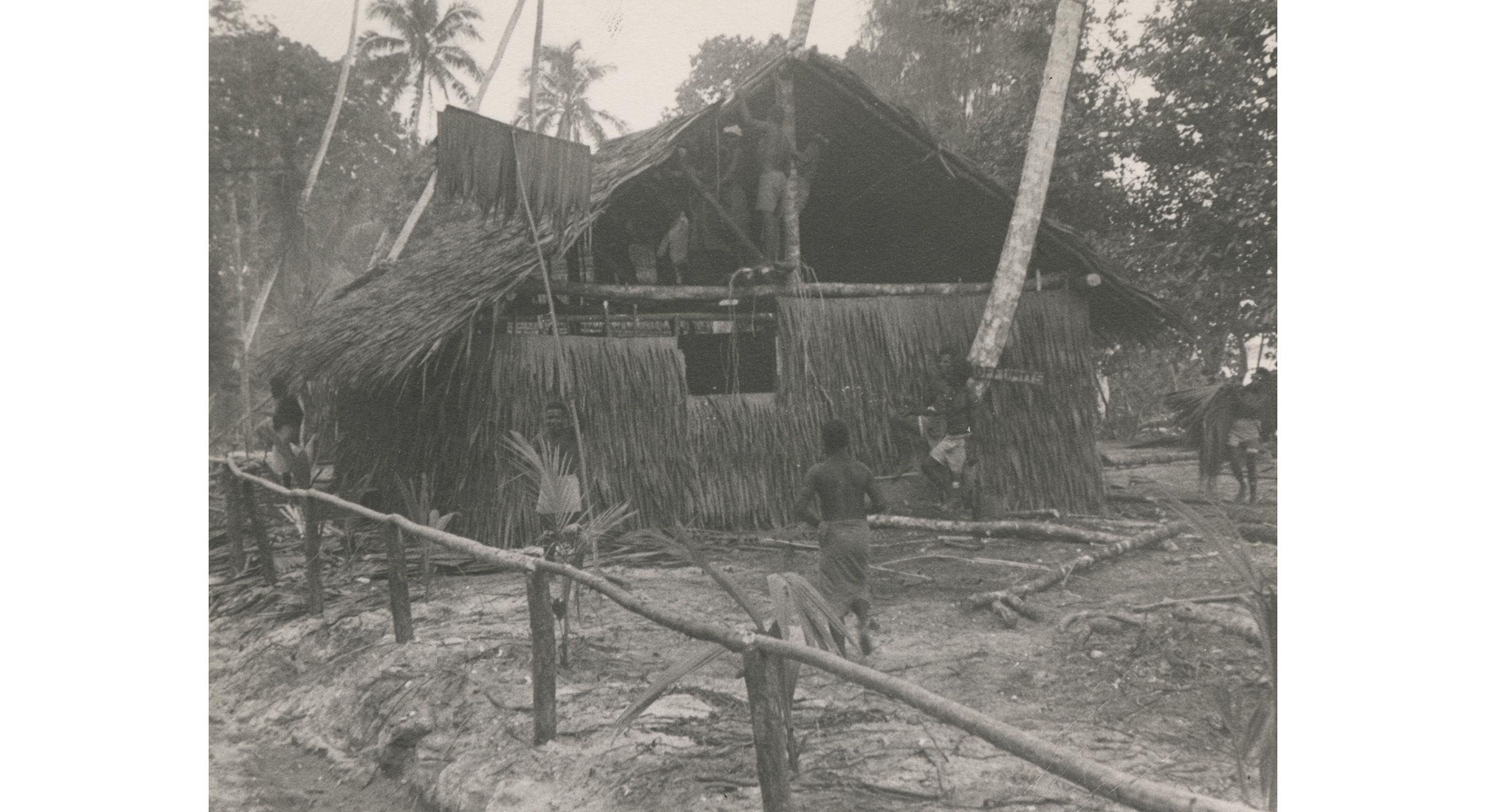
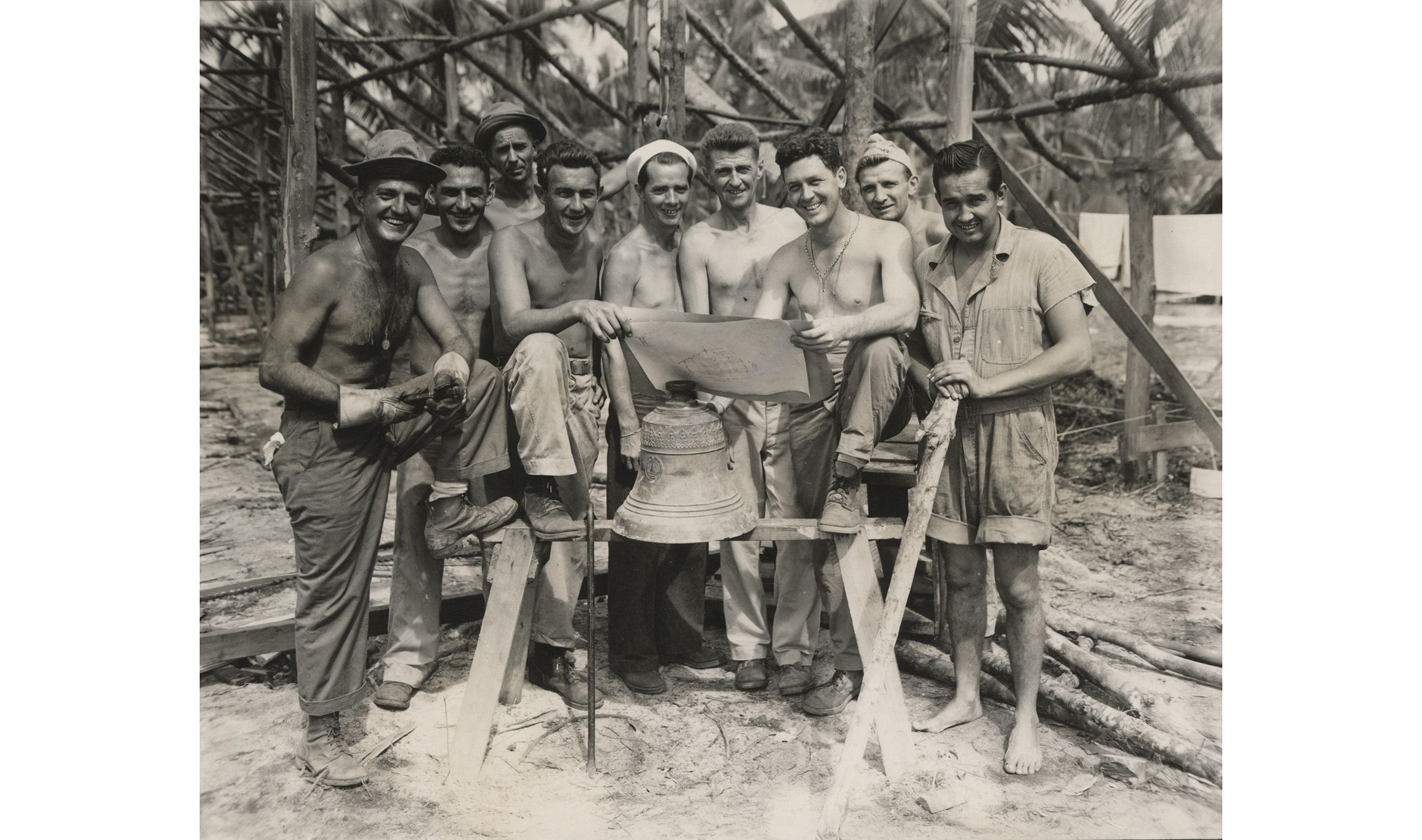
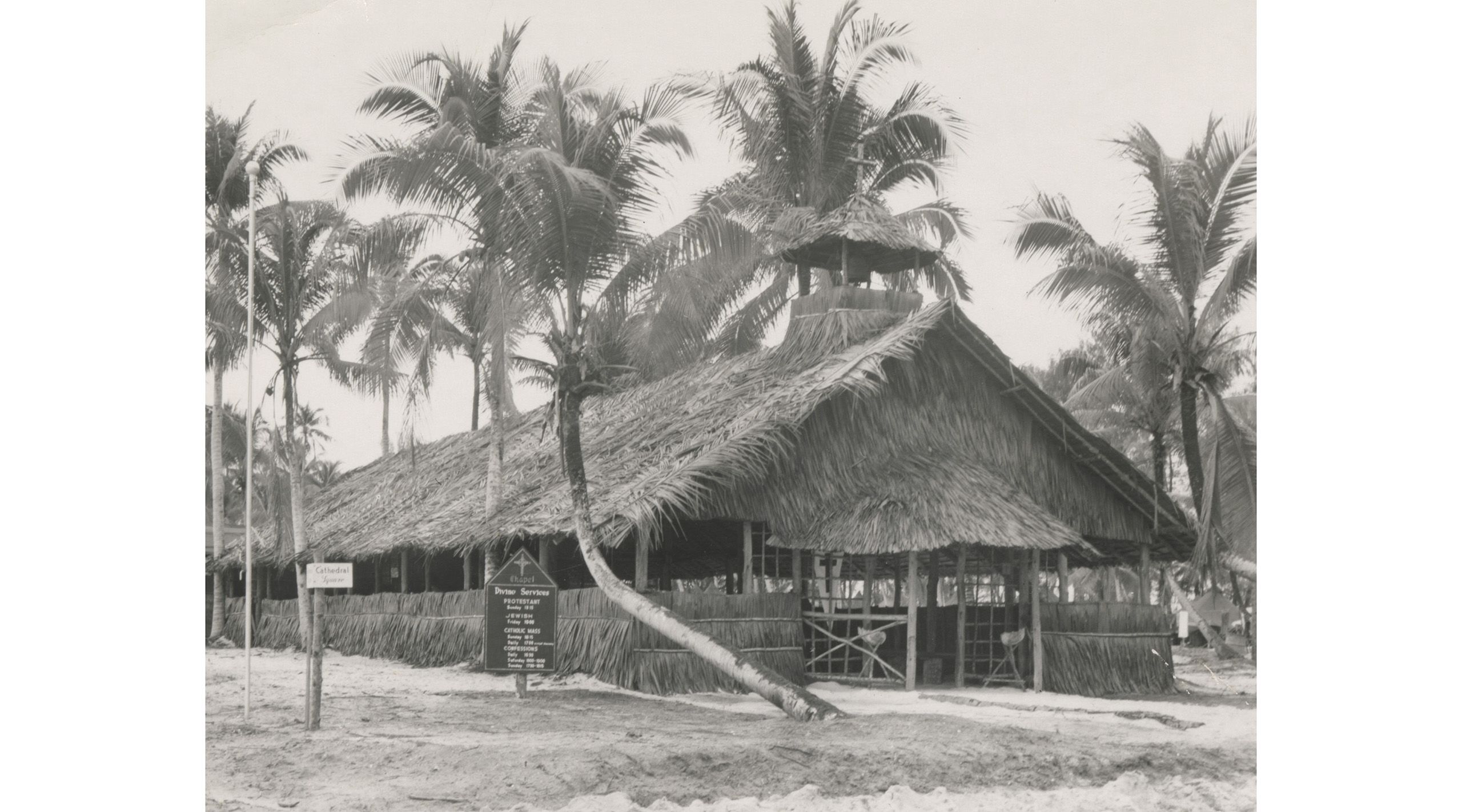
While building the airstrip on Ponam, the 78th Construction Battalion also worked with local Ponam residents to build a chapel they dubbed “Cathedral Square.”
The project began when Father John D. Kofflin, a chaplain with the 78th, discovered a ramshackle church from when German Catholic Missionaries of the Sacred Heart arrived in the area in the early 1900s. Father Kofflin shared his discovery with his fellow Seabees and they agreed to build a new church for the Ponam locals.
Working together, islanders and Seabees cut and gathered lumber, constructed the frame of the church, and finished it with native foliage that was naturally water resistant.
Metal workers in the Seabee ranks even restored to working condition an old, broken bell, which was placed in the chapel’s steeple.
The entire project, which was done entirely during the Seabees’ limited free time, took just three weeks. Cathedral Square became a meeting place for people of all faiths and denominations among Ponam residents and the US Armed Forces.
Cathedral Square, by Natale Bellantoni, June 24, 1944. Digital Record
Cathedral Square, by Natale Bellantoni, June 24, 1944. Digital Record

Unless otherwise noted, all collection material shared in this presentation is part of the Natale Bellantoni Papers housed at the Hoover Institution Library & Archives, Stanford University.
The Hoover Institution Library & Archives has placed copies of these works online for educational and research purposes. If you would like to use any of these works, you are responsible for making your own legal assessment and securing any necessary permission. If you have questions about this resource or have concerns about the inclusion of an item, please contact the Hoover exhibits team:
Contact Us
For more information about rights and permissions please visit, https://www.hoover.org/library-archives/collections/get-help/right-and-permissions.
© 2022 by the Board of Trustees of Leland Stanford Junior University.

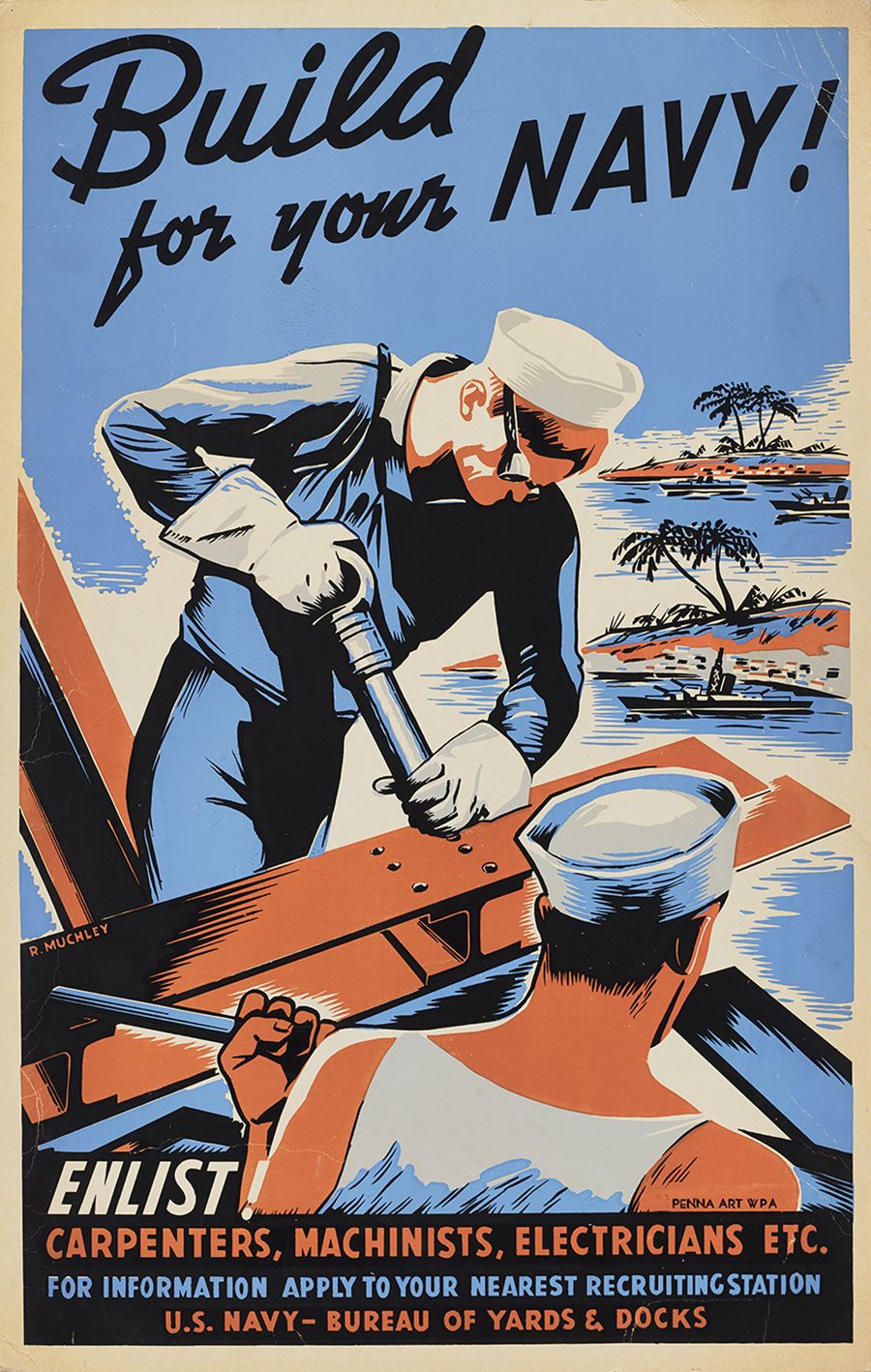
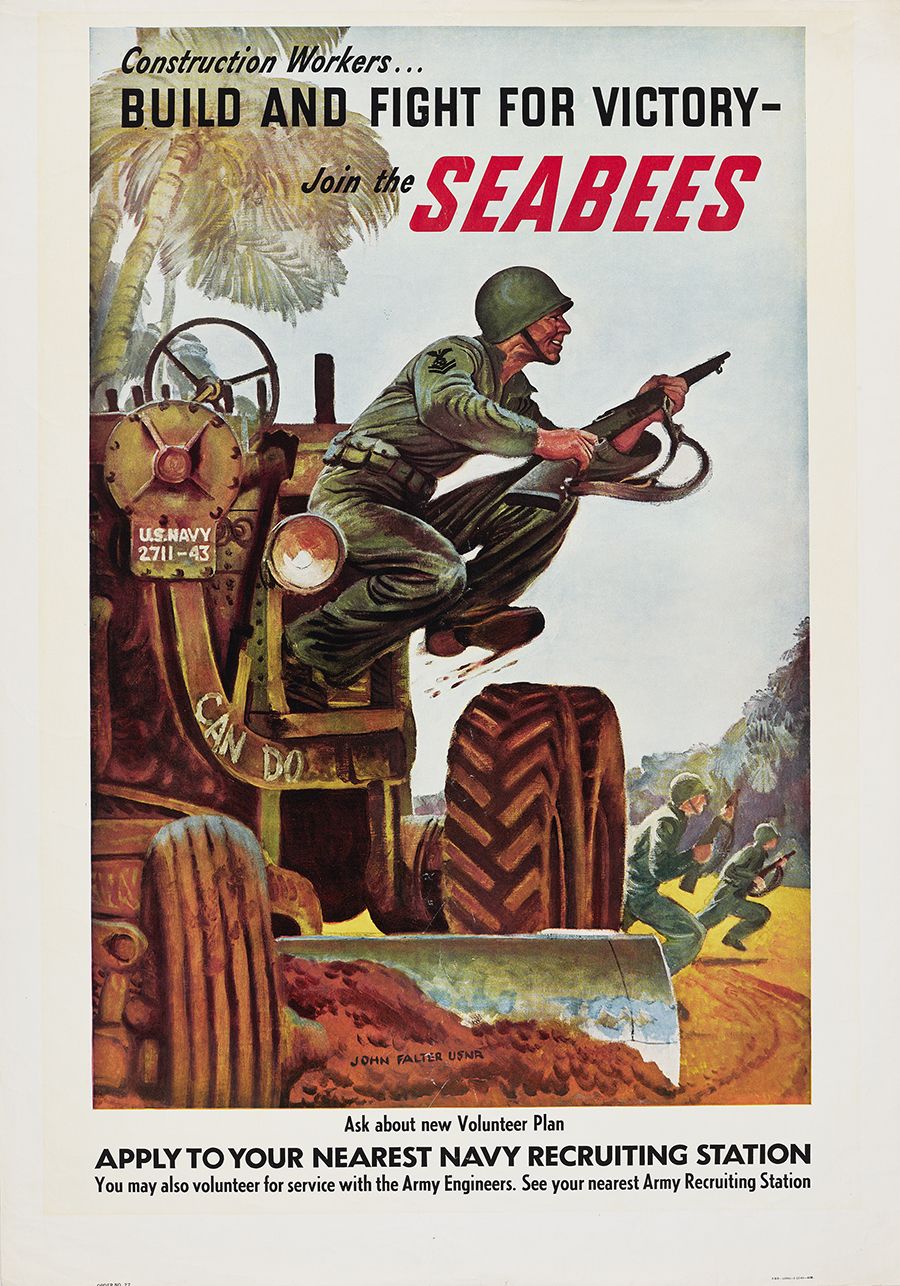
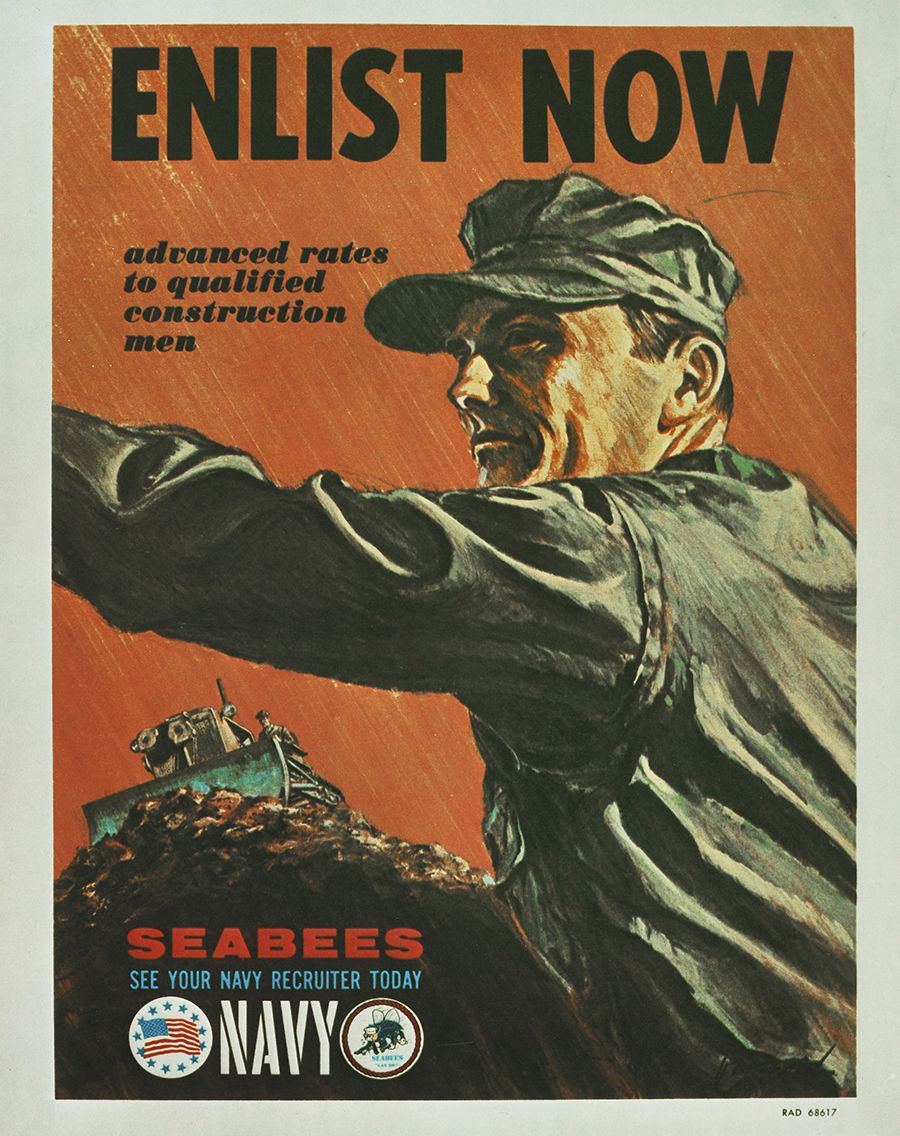
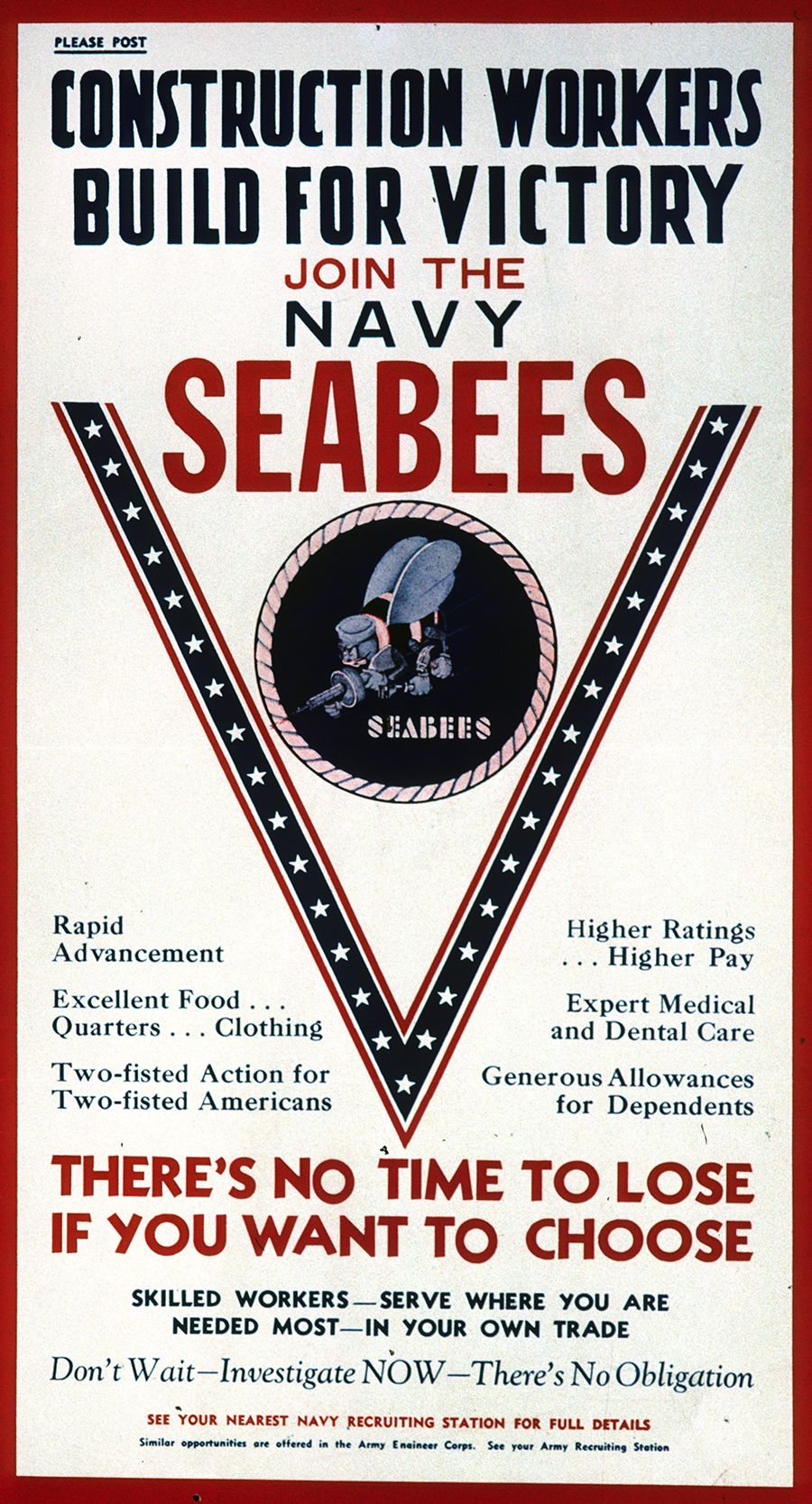
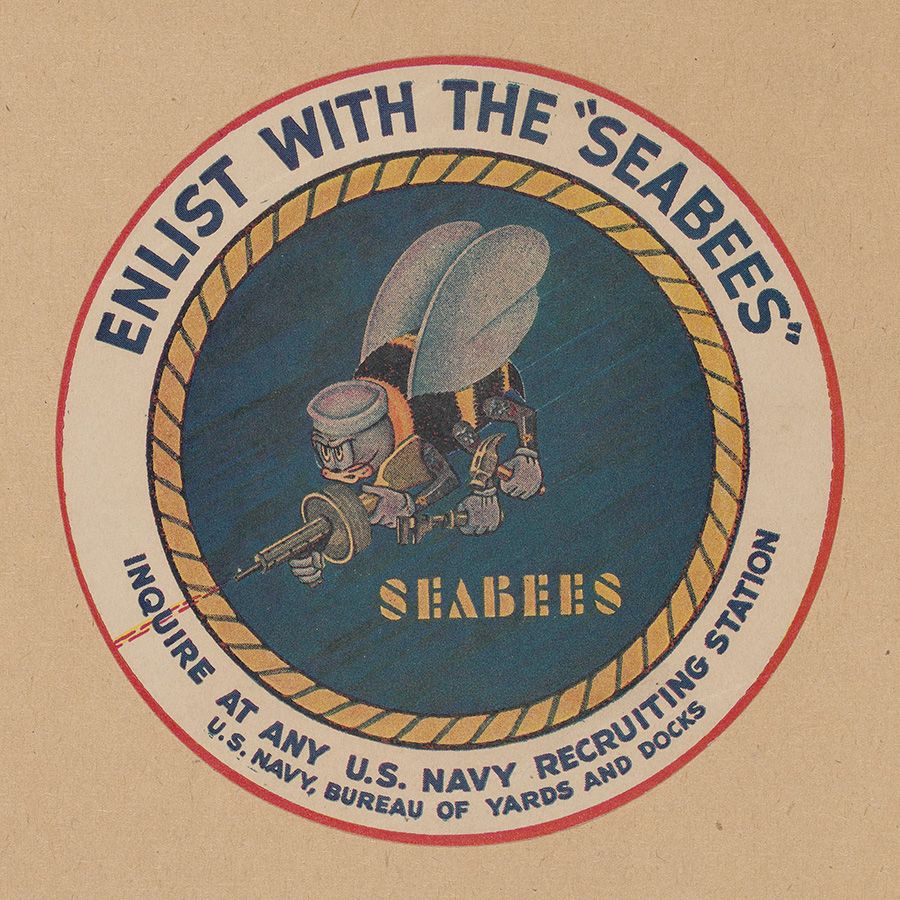

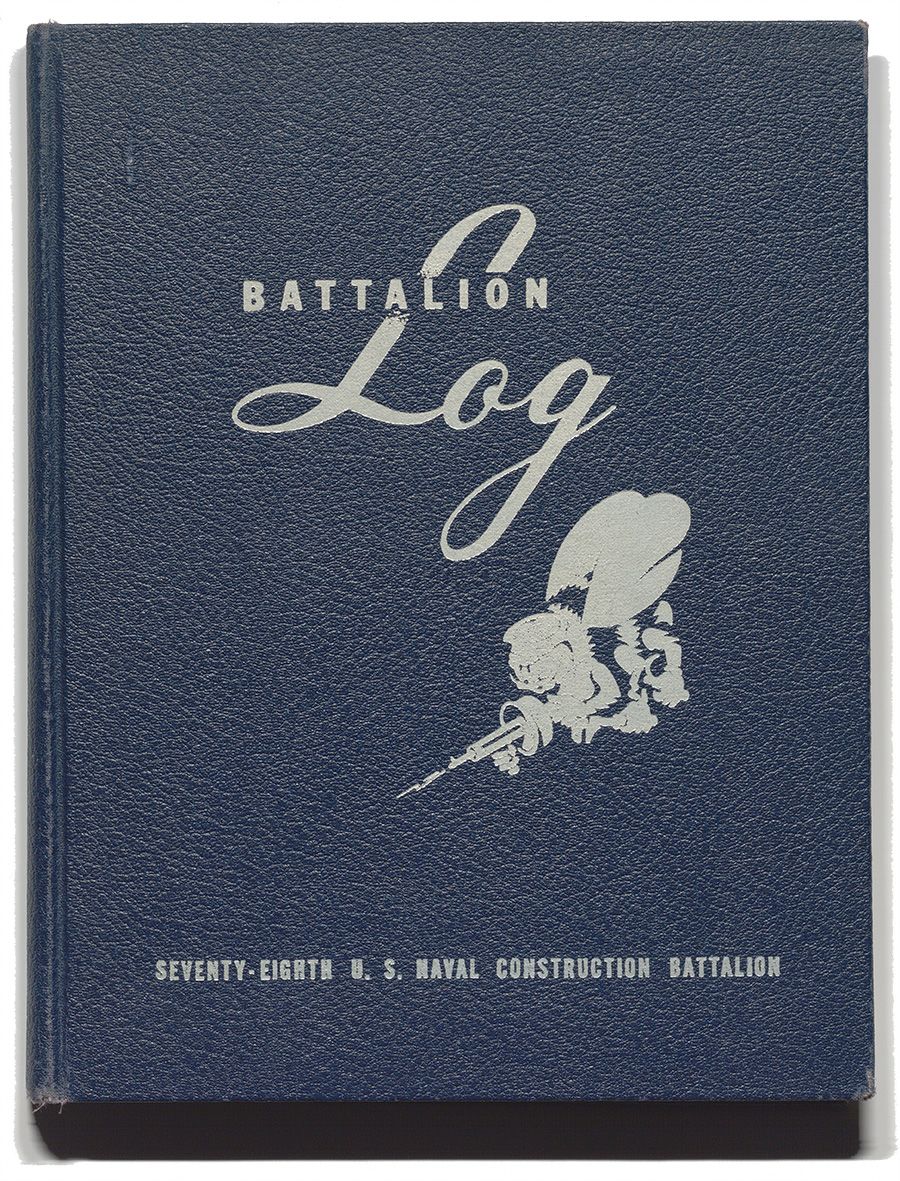
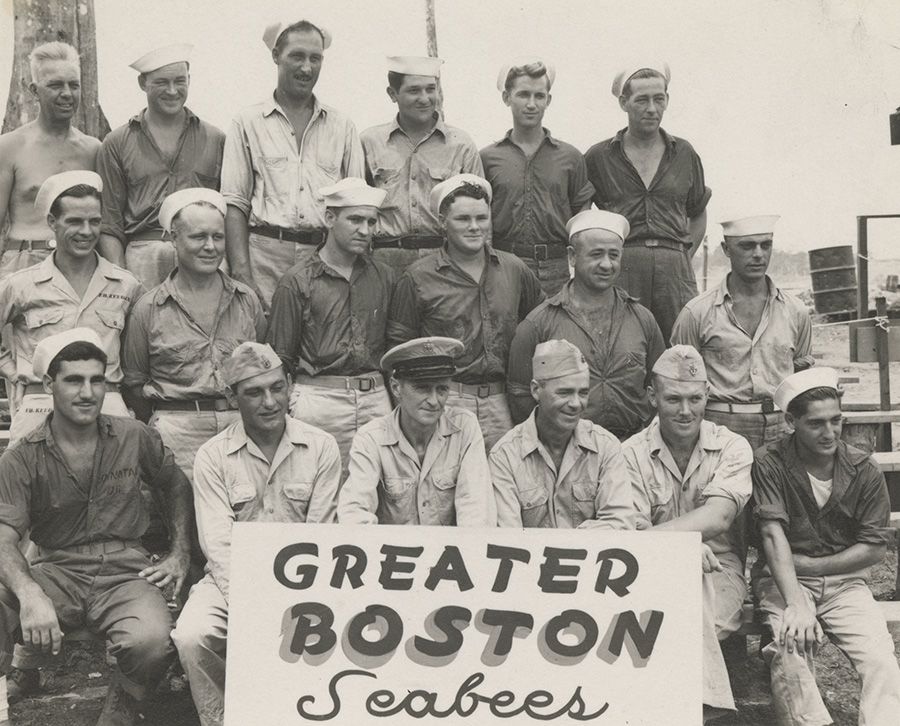
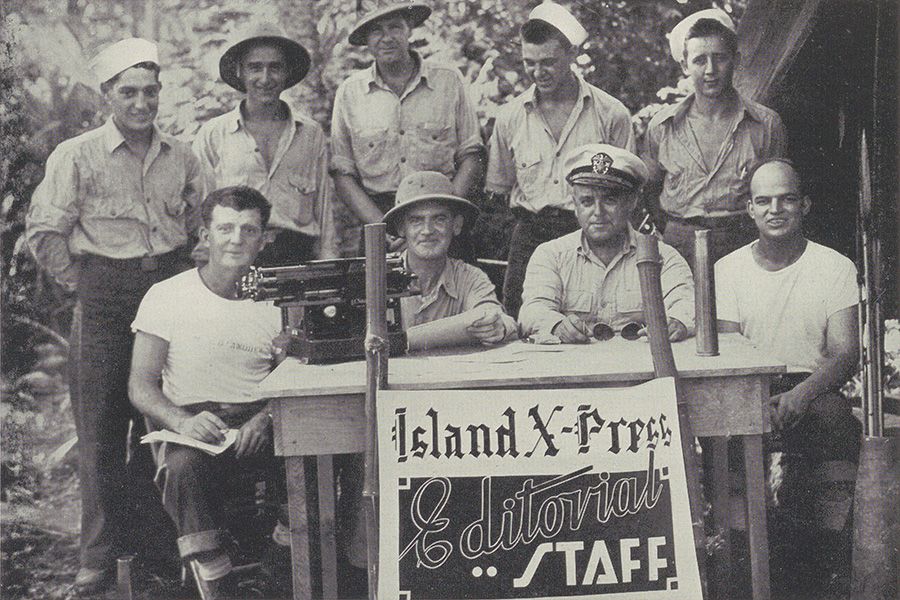
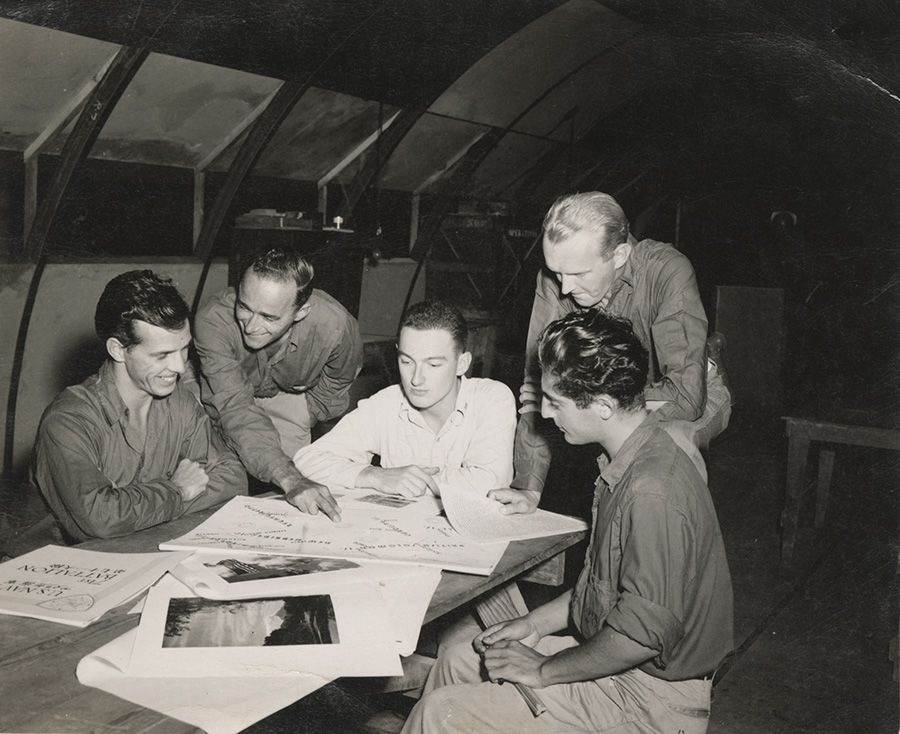

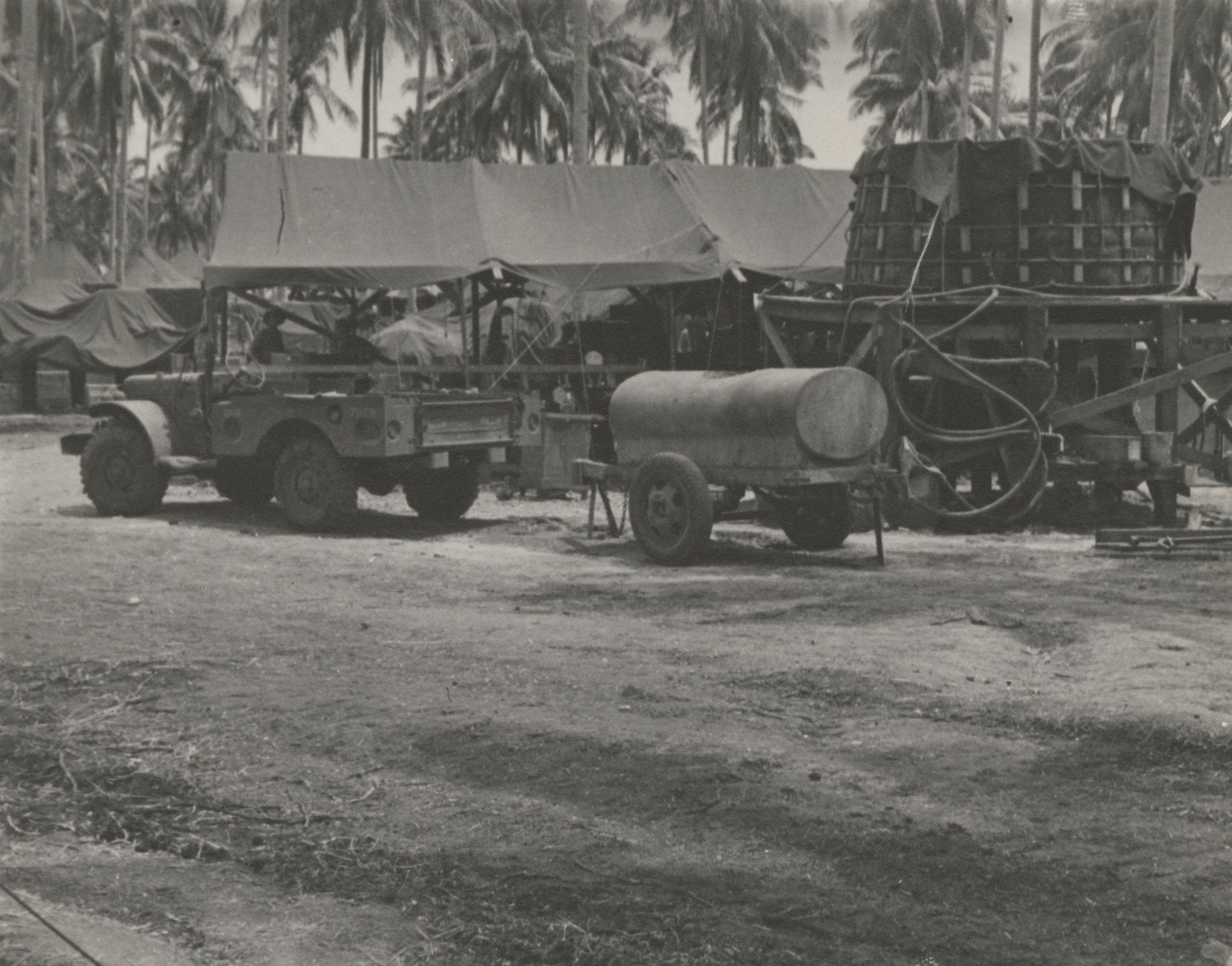
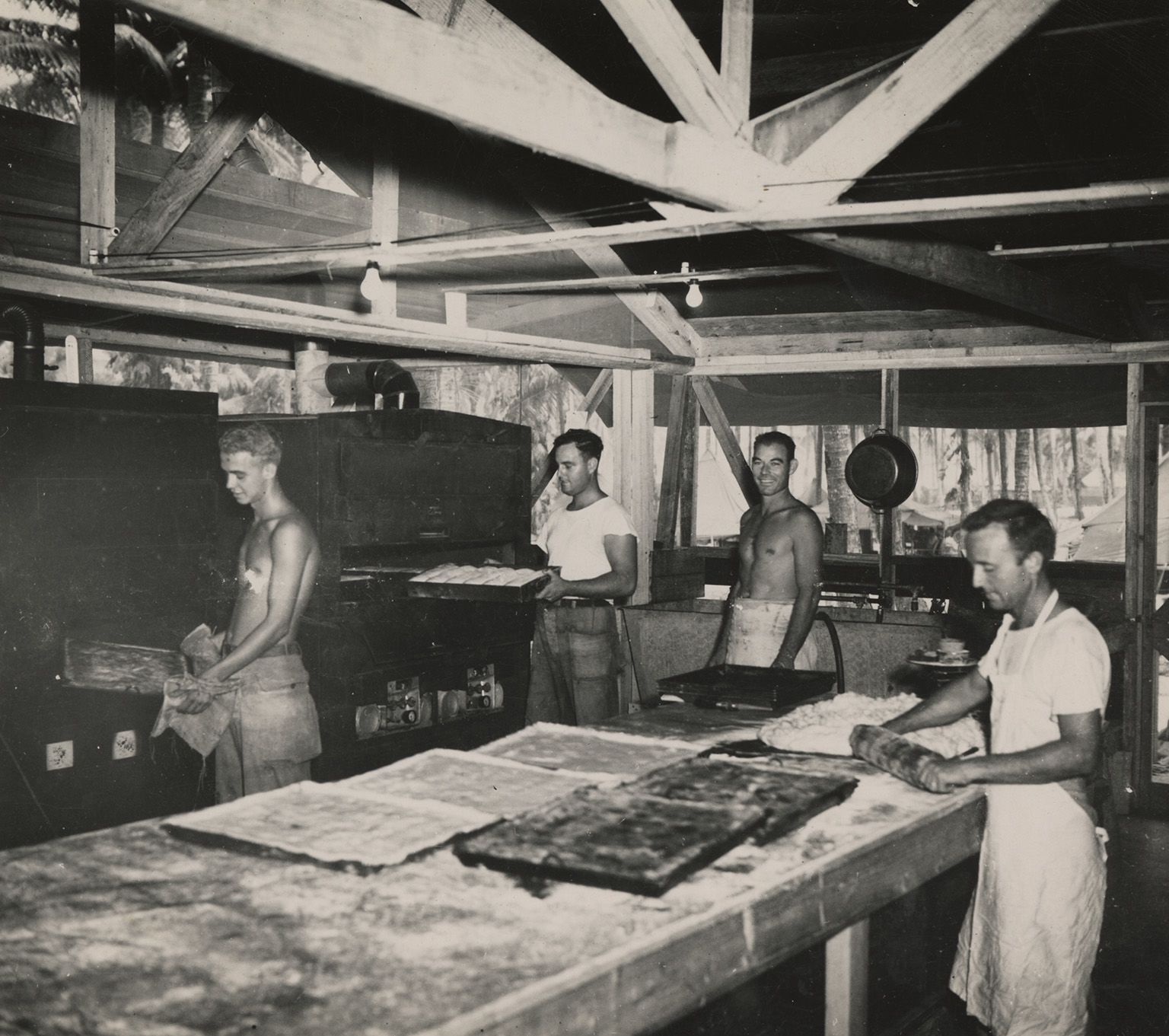
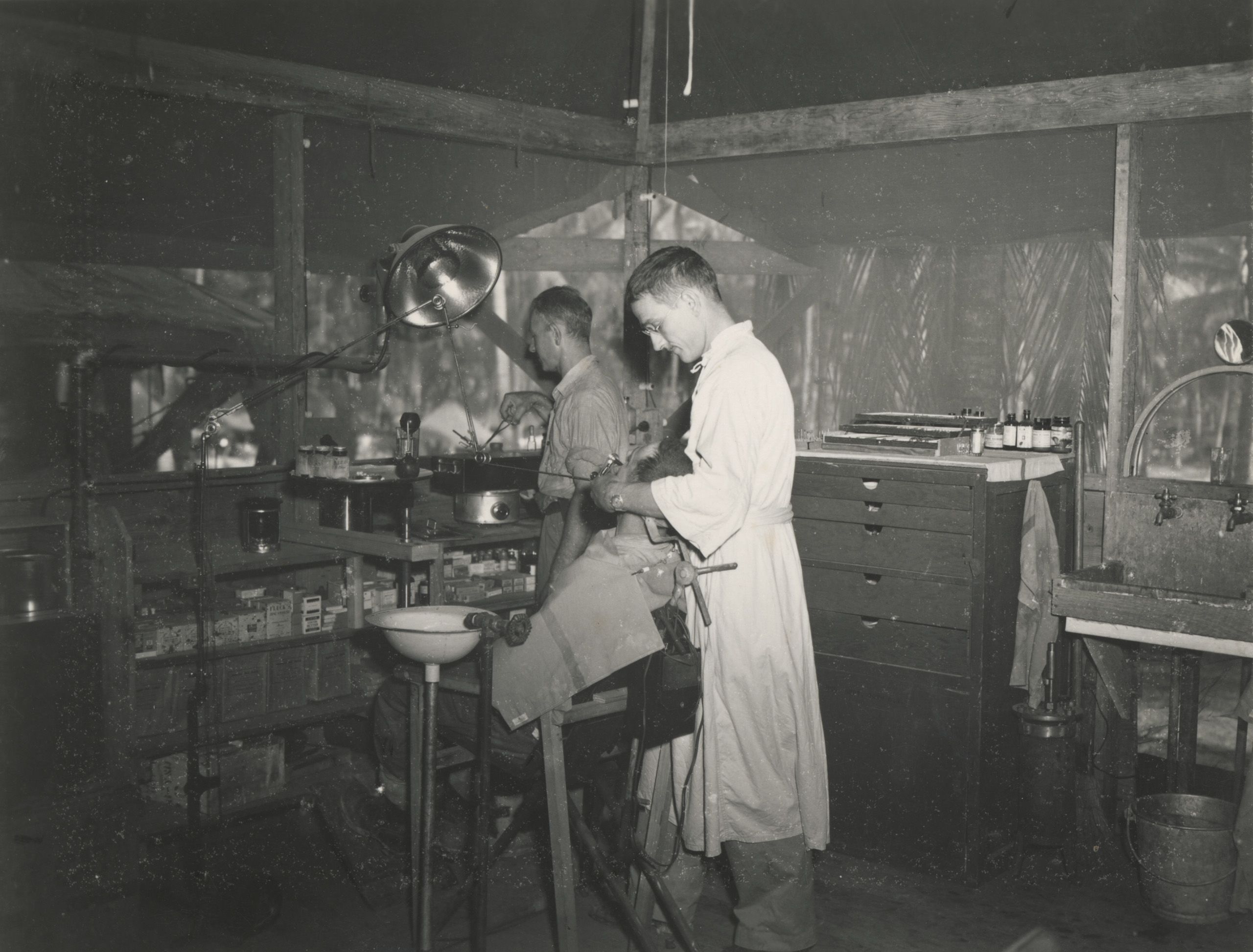
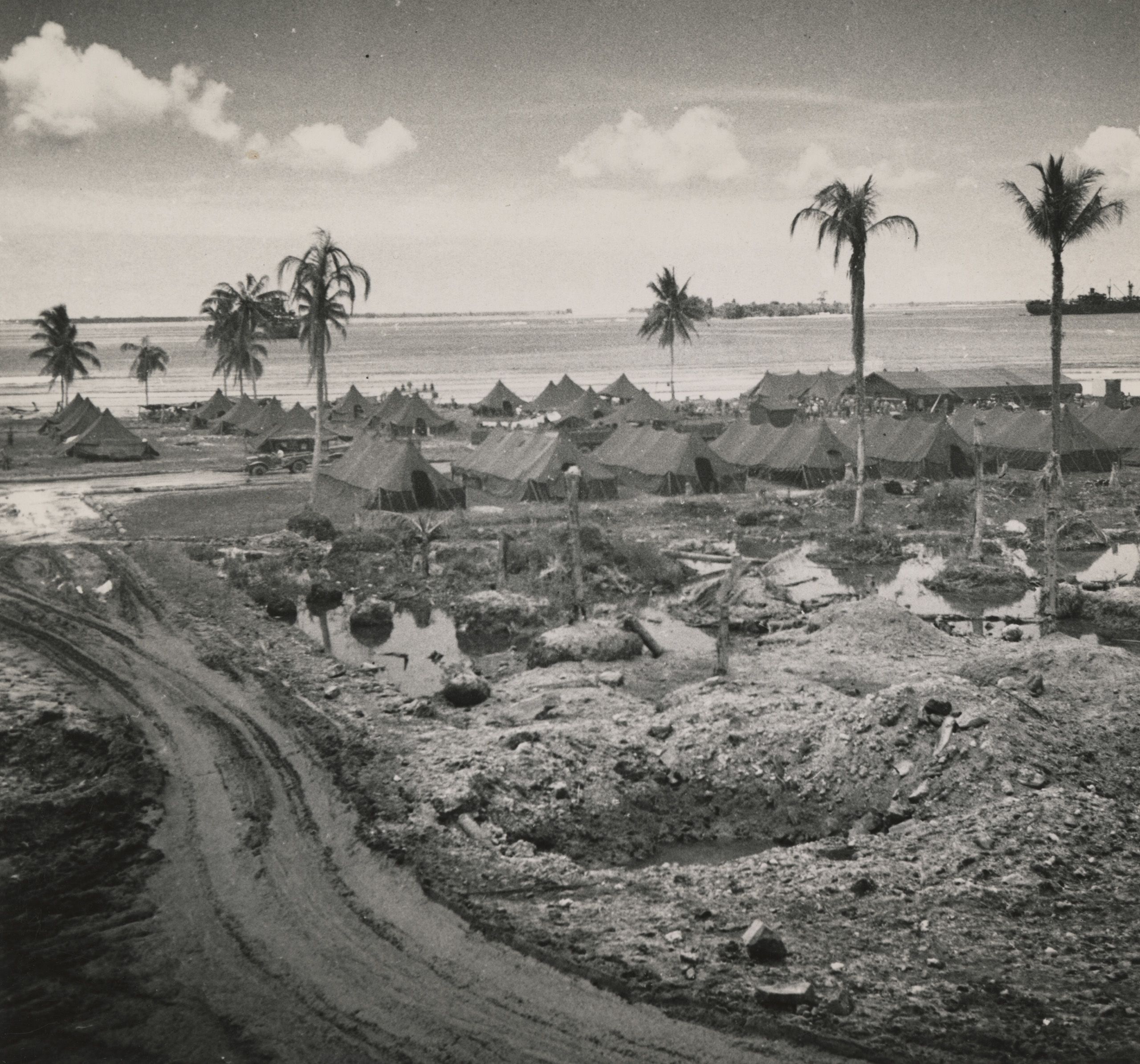
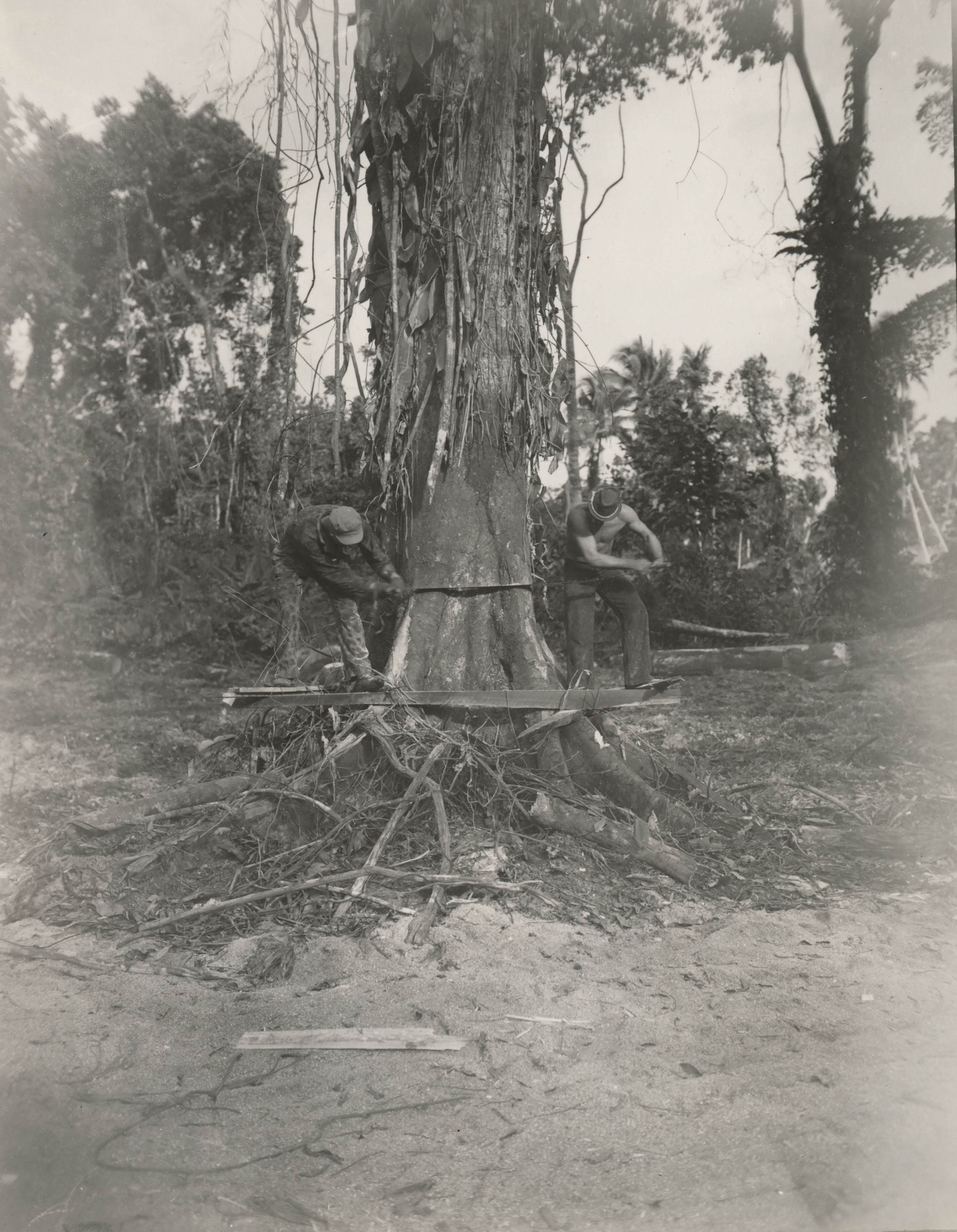



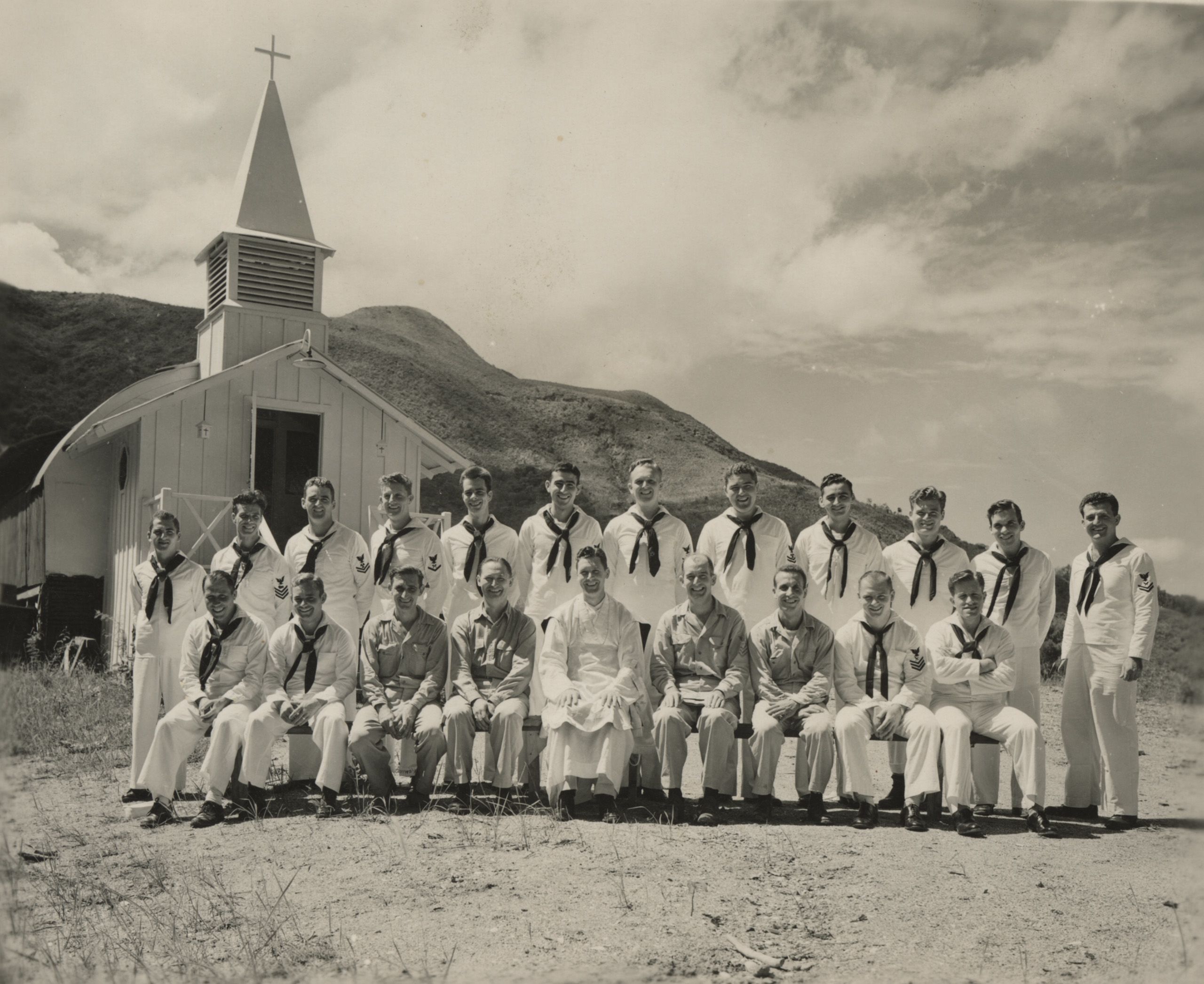
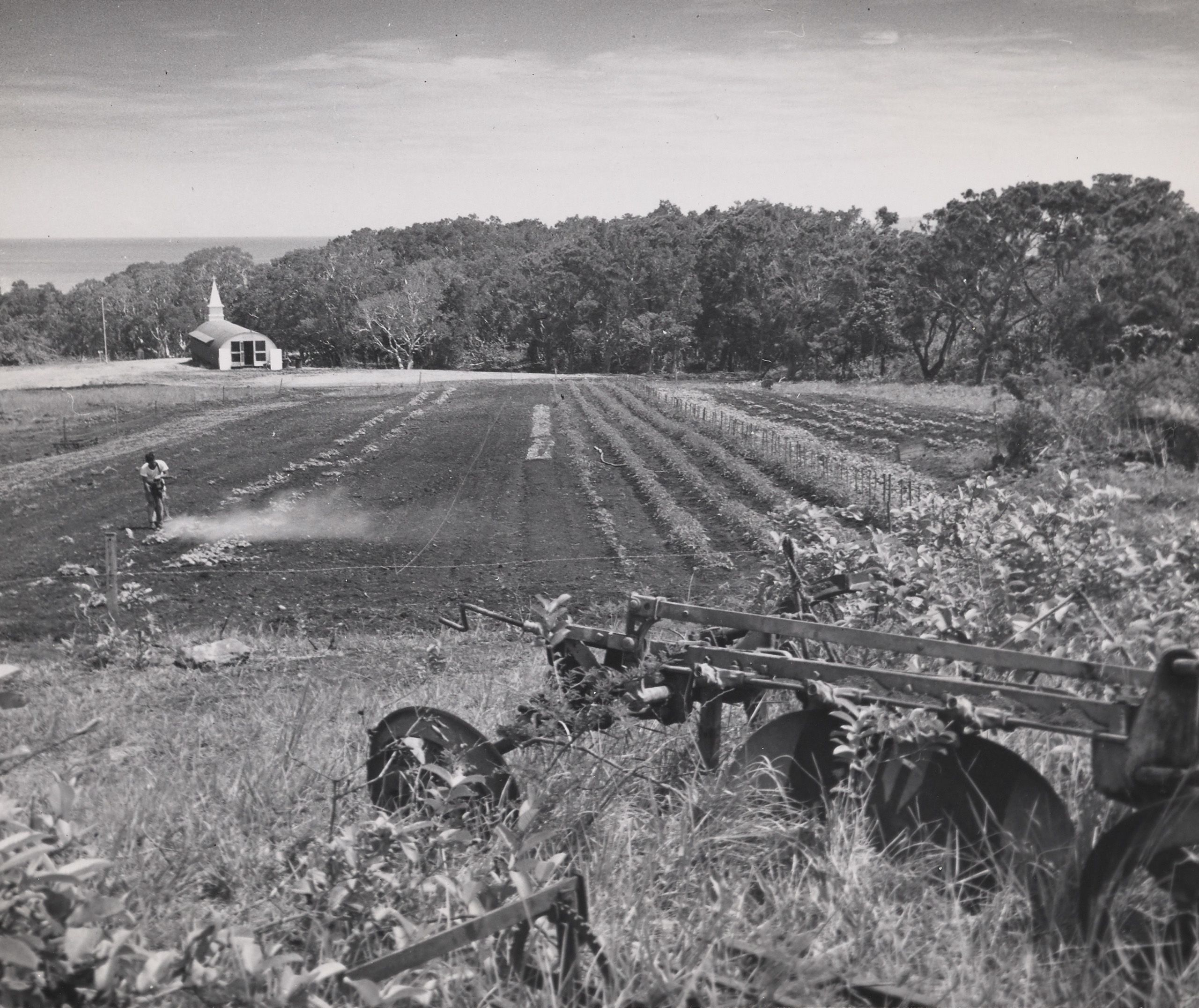
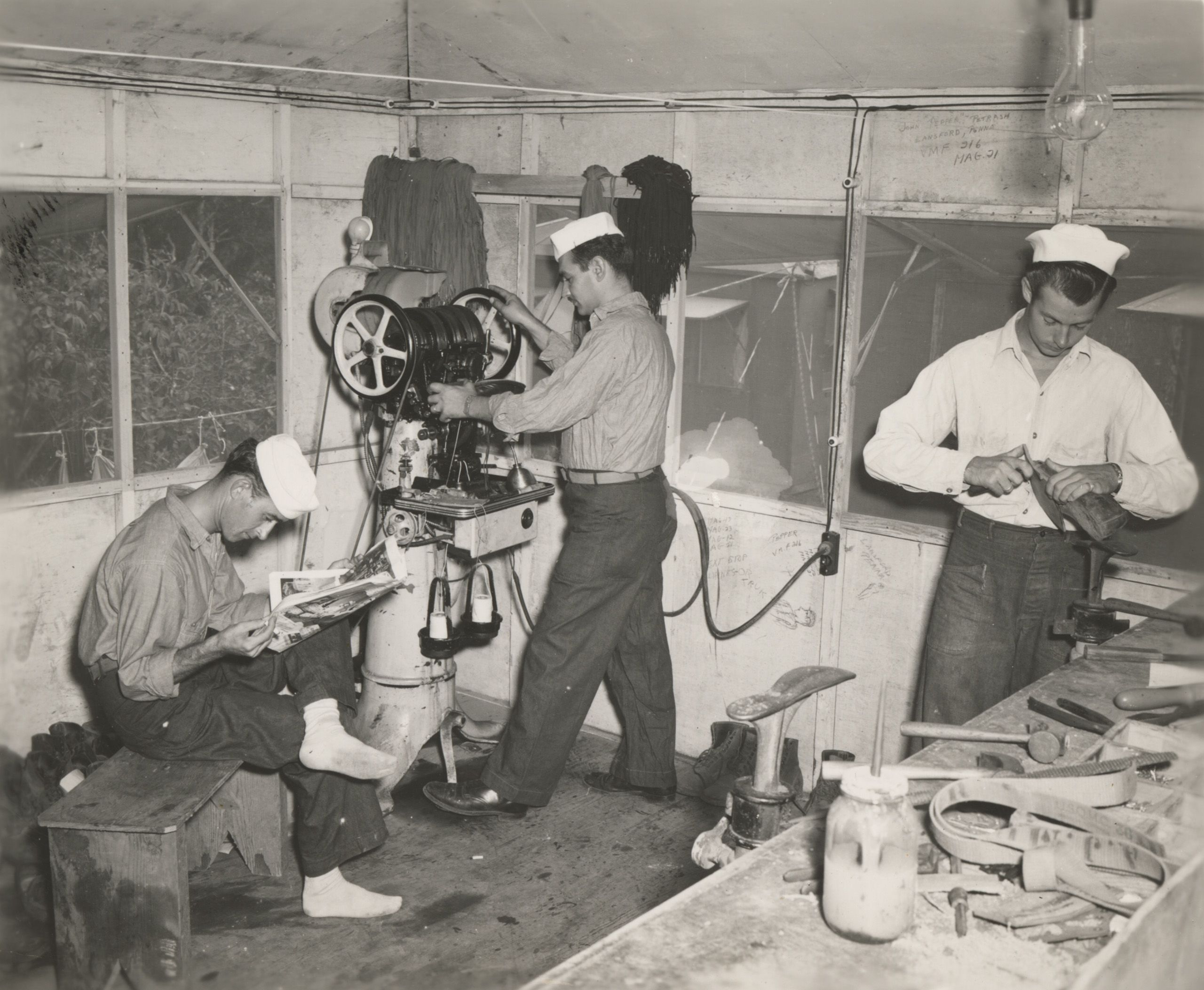
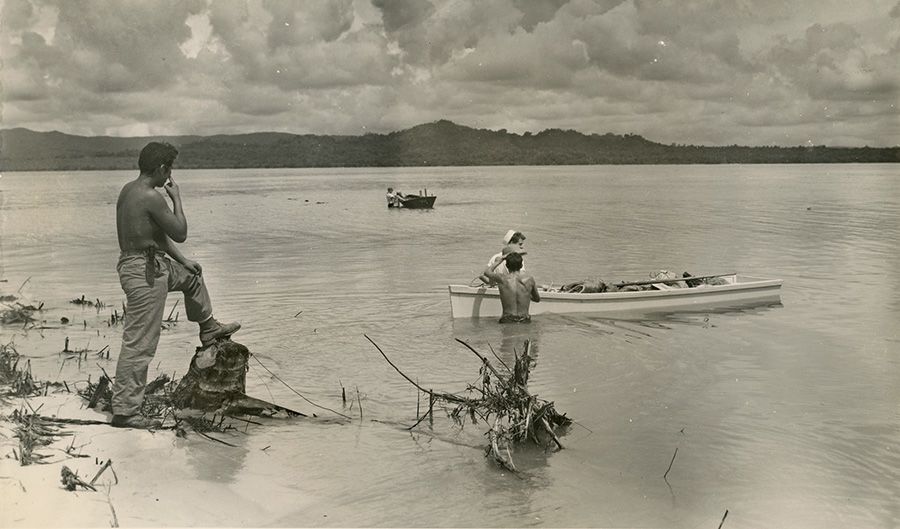



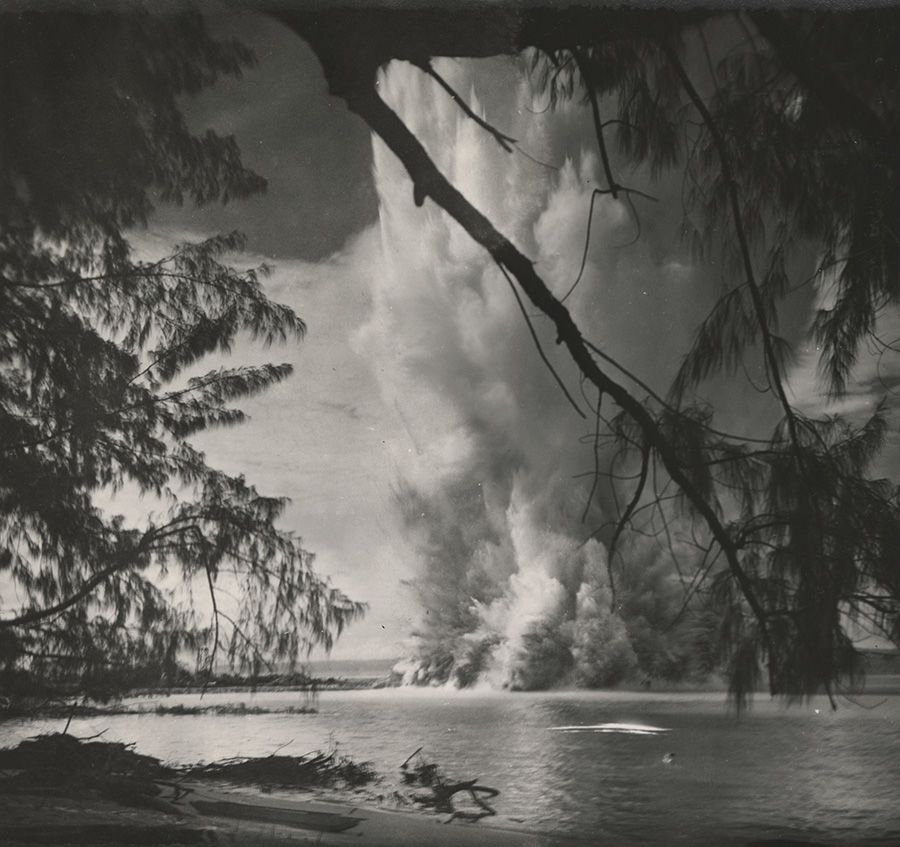
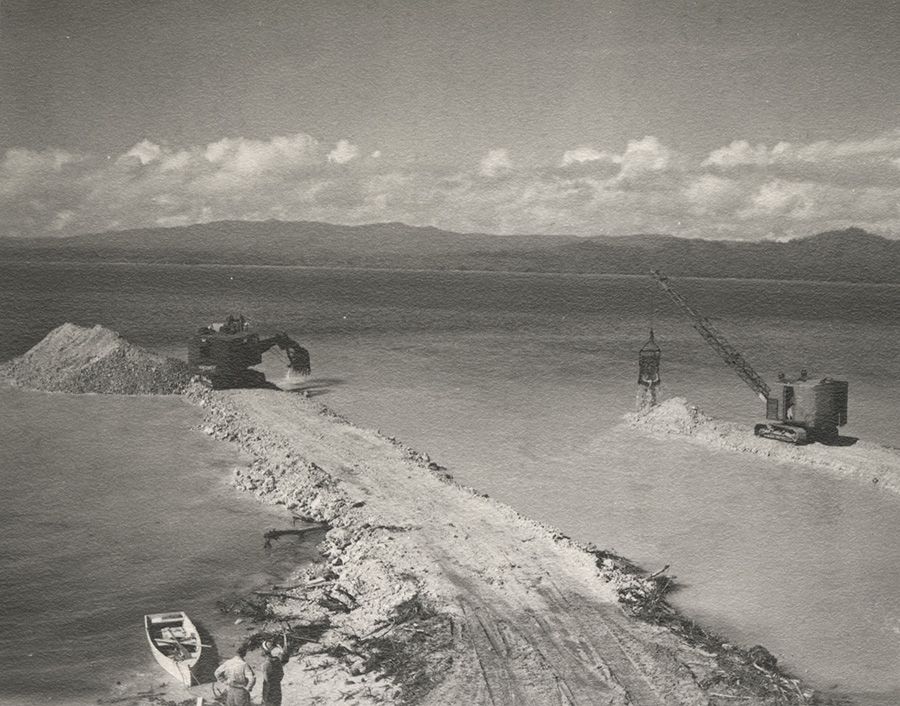

![Four Rollers - Ponam Airstrip, Ginsberg, "Horse" Hulett, Cassale [Note on back], by William S. Snell, 1944.](./assets/Bkuslpddeq/2019c21_044_001-for-web-900x596.jpeg)
![Four Rollers - Ponam Airstrip, Ginsberg, "Horse" Hulett, Cassale [Note on back], by William S. Snell, 1944.](./assets/kFUuEdXo8N/2019c21_044_001-for-web-900x596.jpeg)

